Pharynx
1/92
There's no tags or description
Looks like no tags are added yet.
Name | Mastery | Learn | Test | Matching | Spaced |
|---|
No study sessions yet.
93 Terms
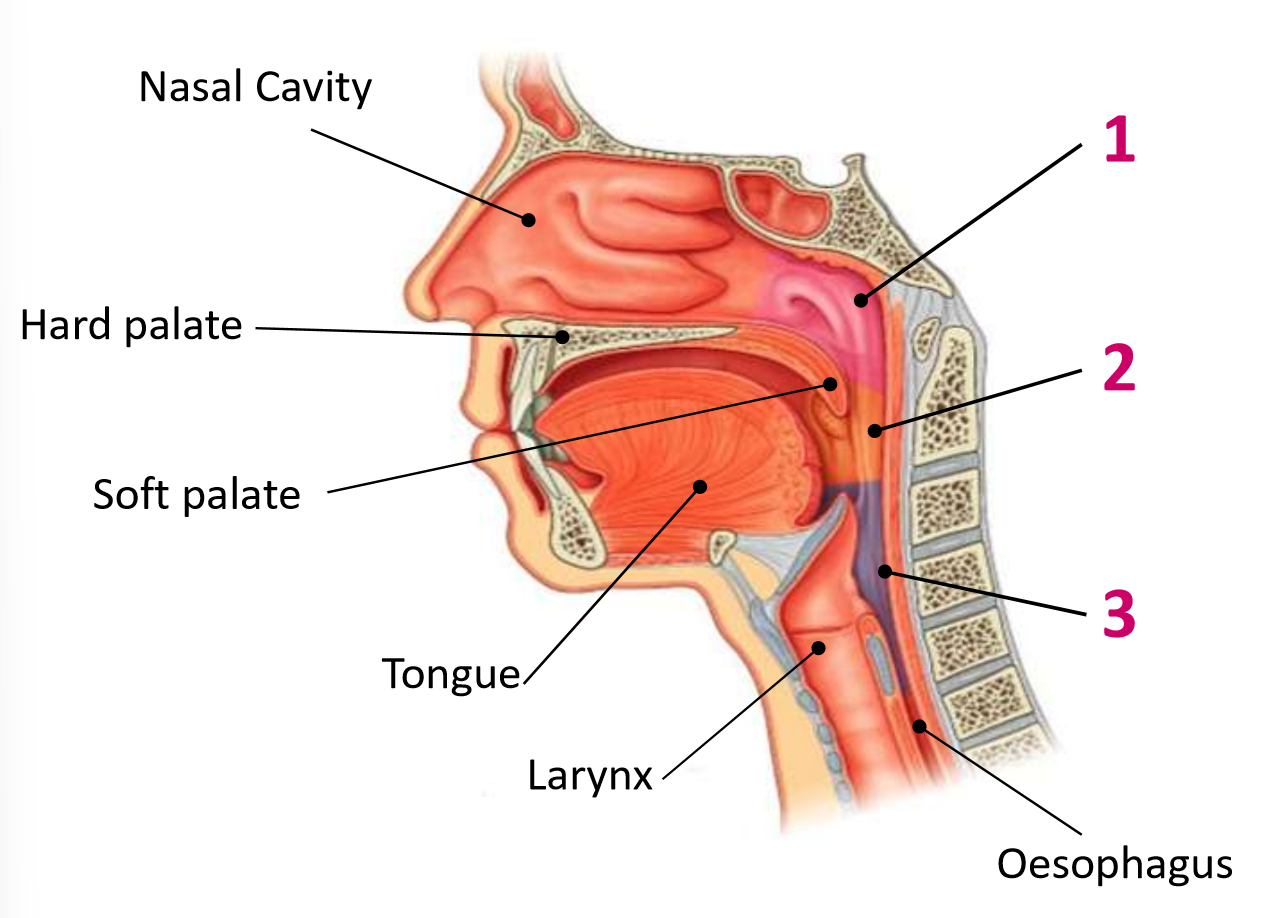
Which area of the head and neck do 1, 2, and 3 make?
pharynx
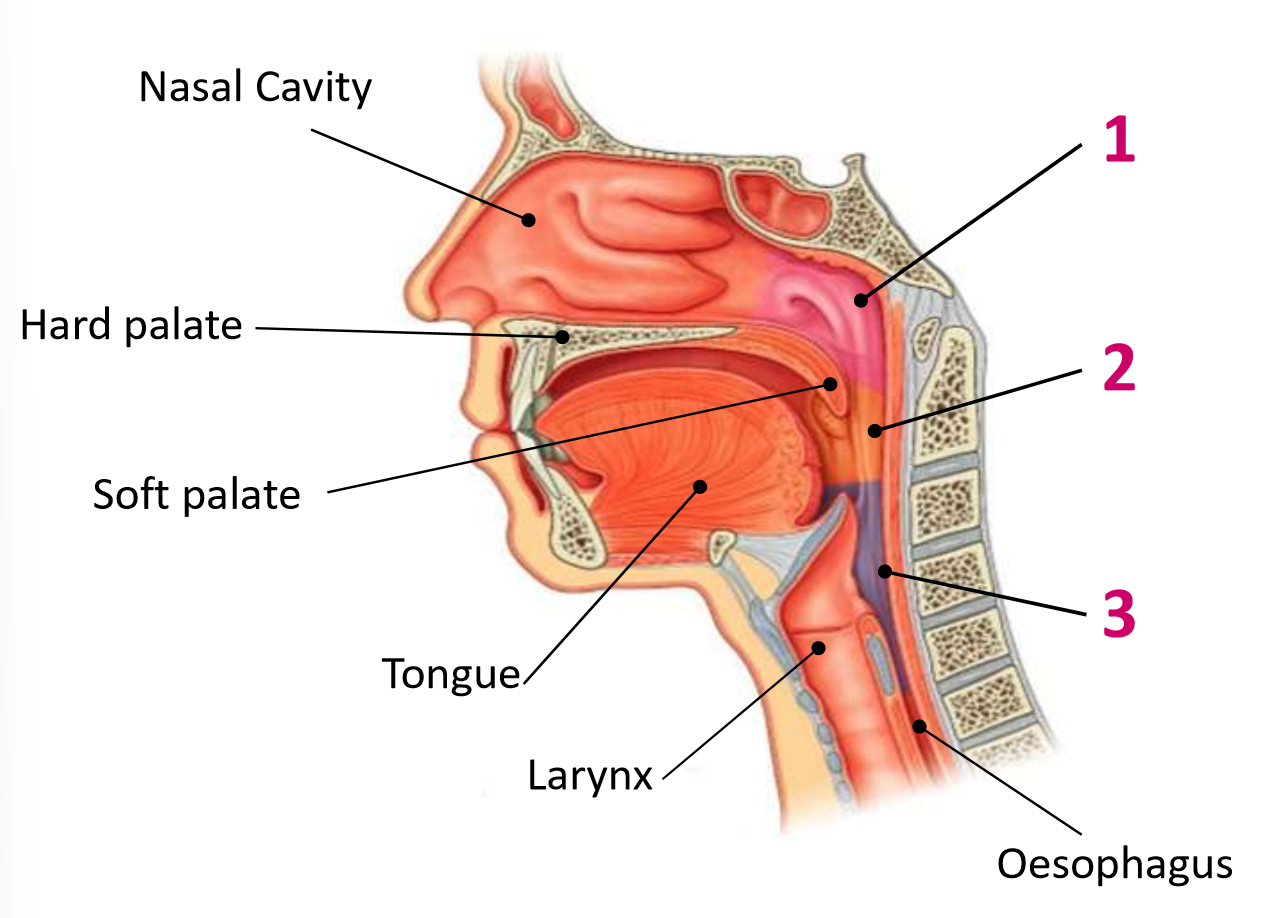
What region is 1?
nasopharynx
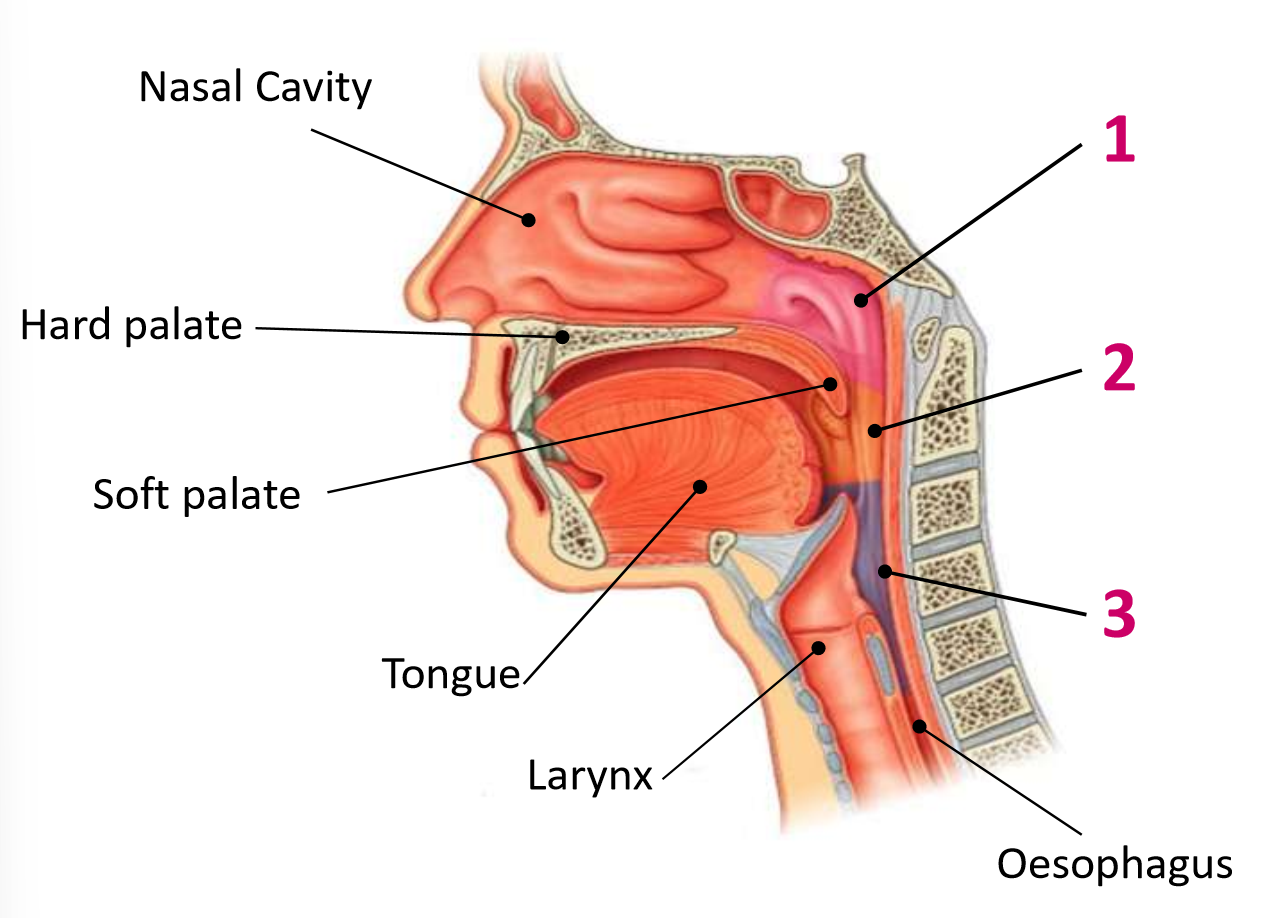
What region is 2?
oropharynx
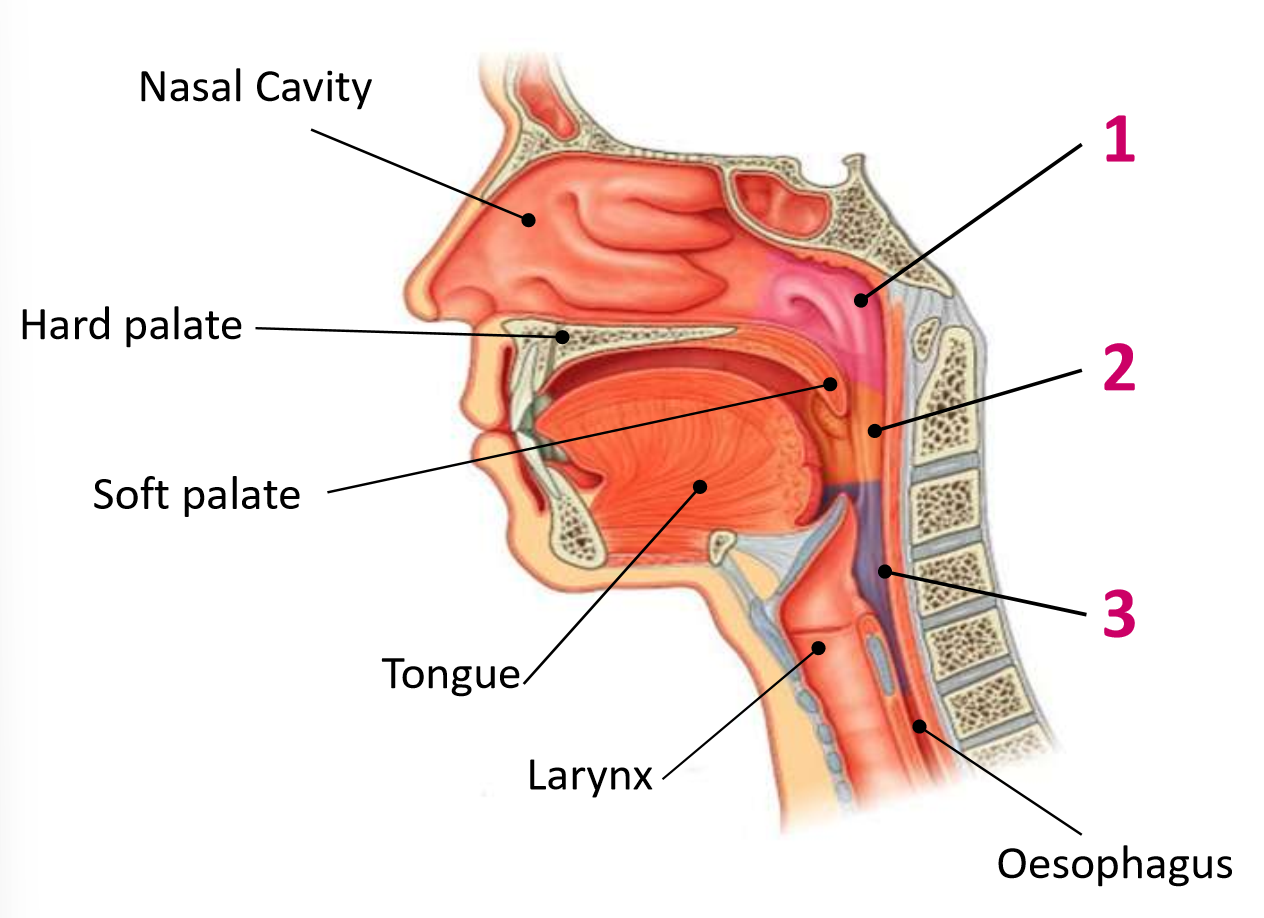
What region is 3?
laryngopharynx
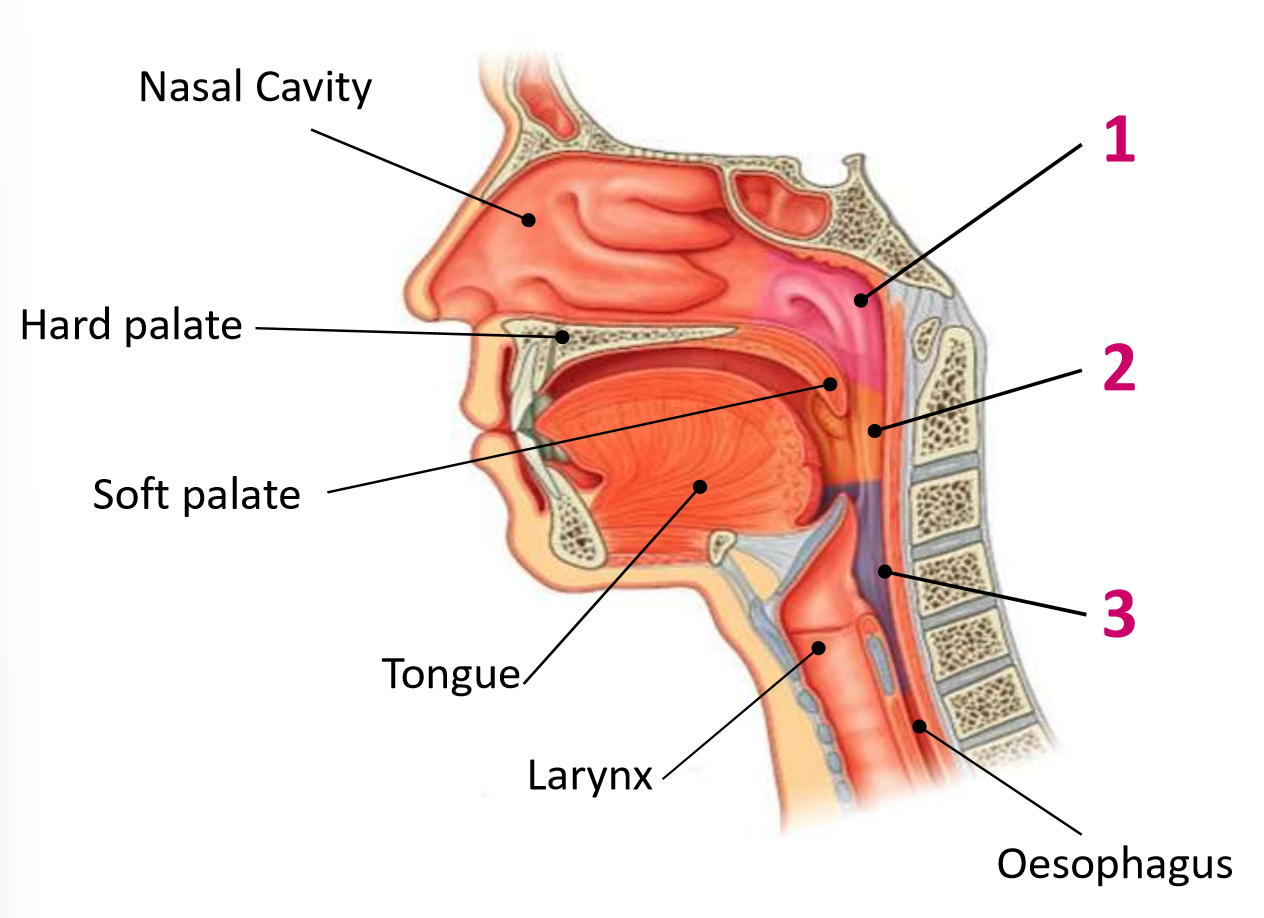
What is the anterior wall of 1?
posterior nasal choanae
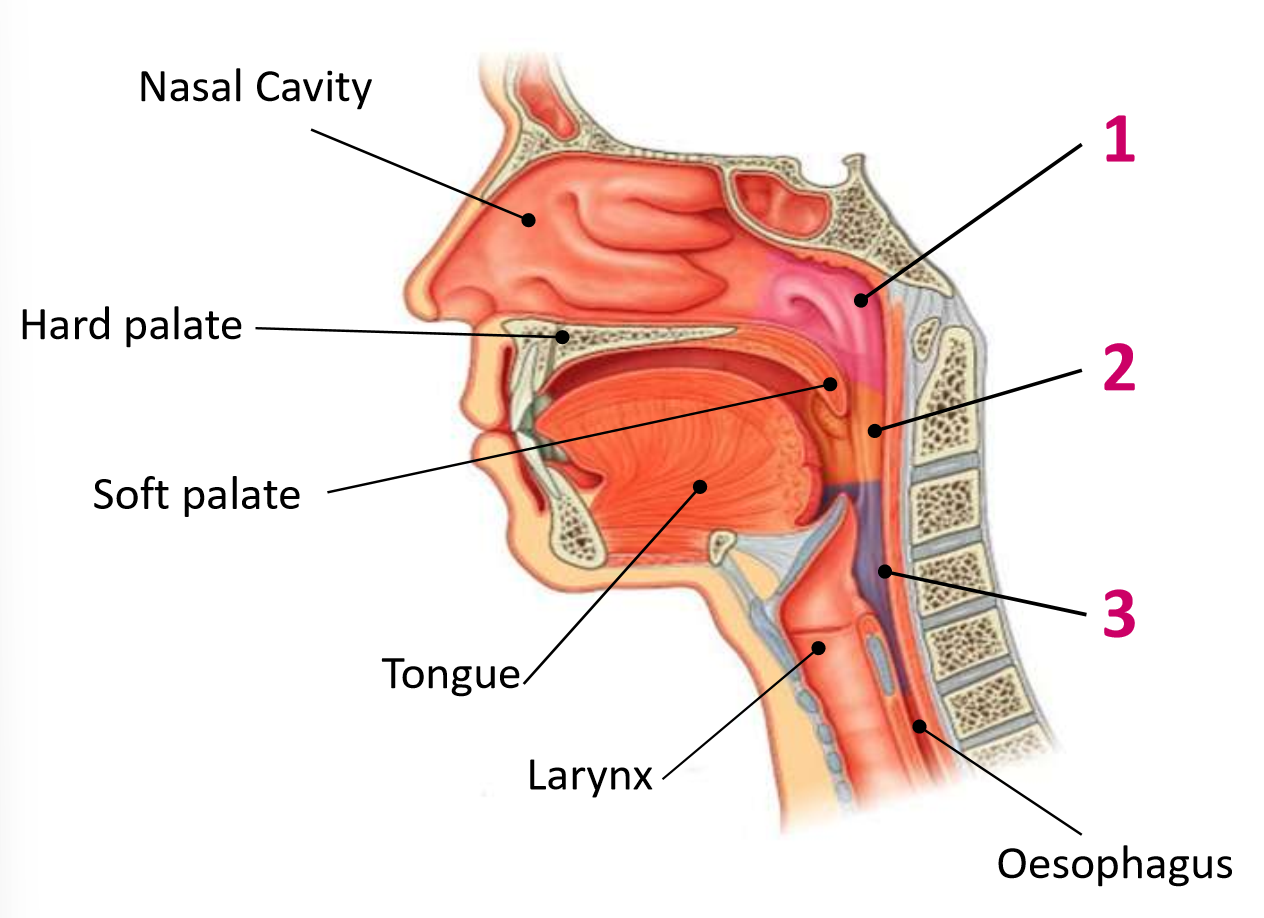
What is the roof of 1?
body of sphenoid and basilar part of occipital
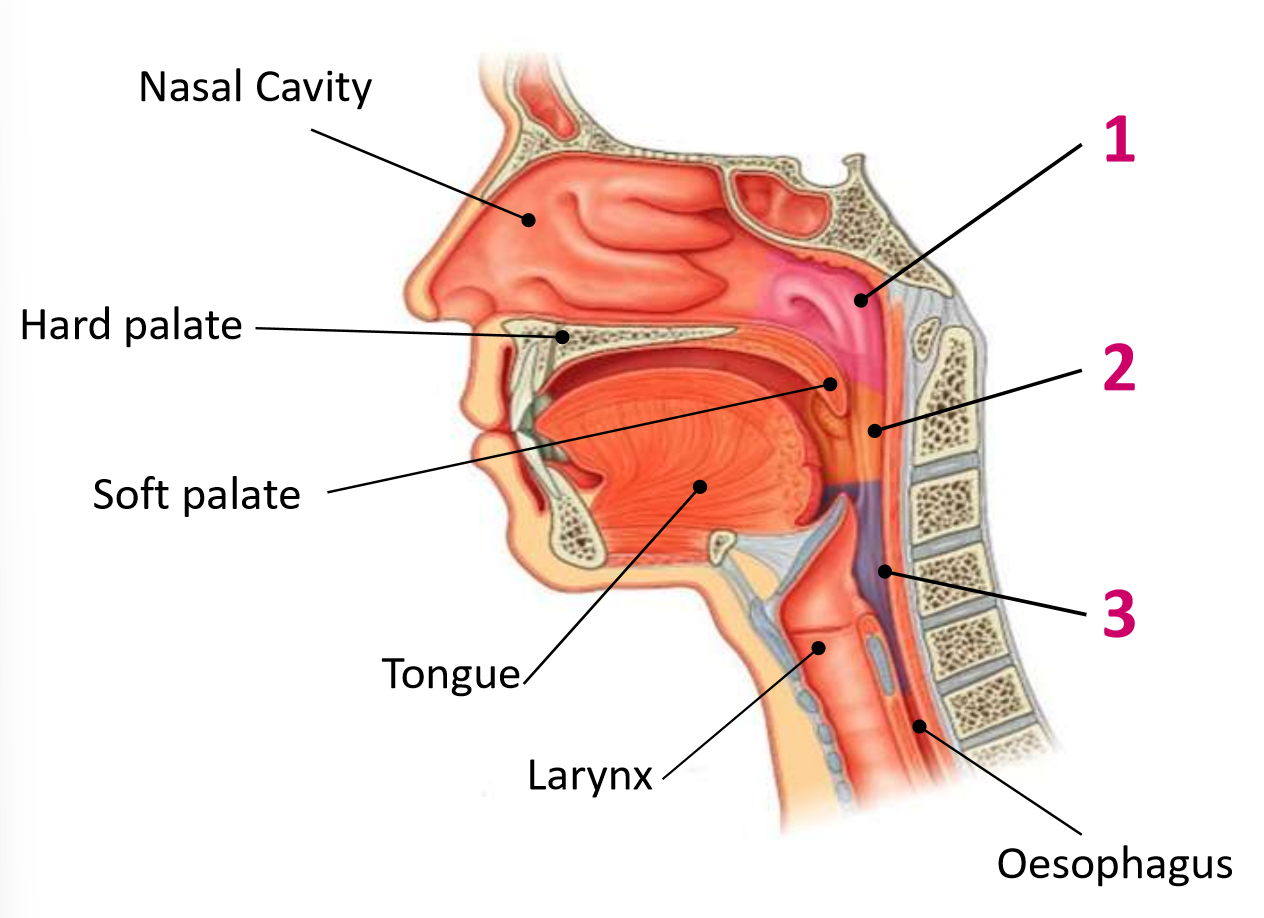
What is the posterior wall of 1?
anterior arch of atlas covered in pharyngobasilar fascia

What is the floor of 1?
soft palate
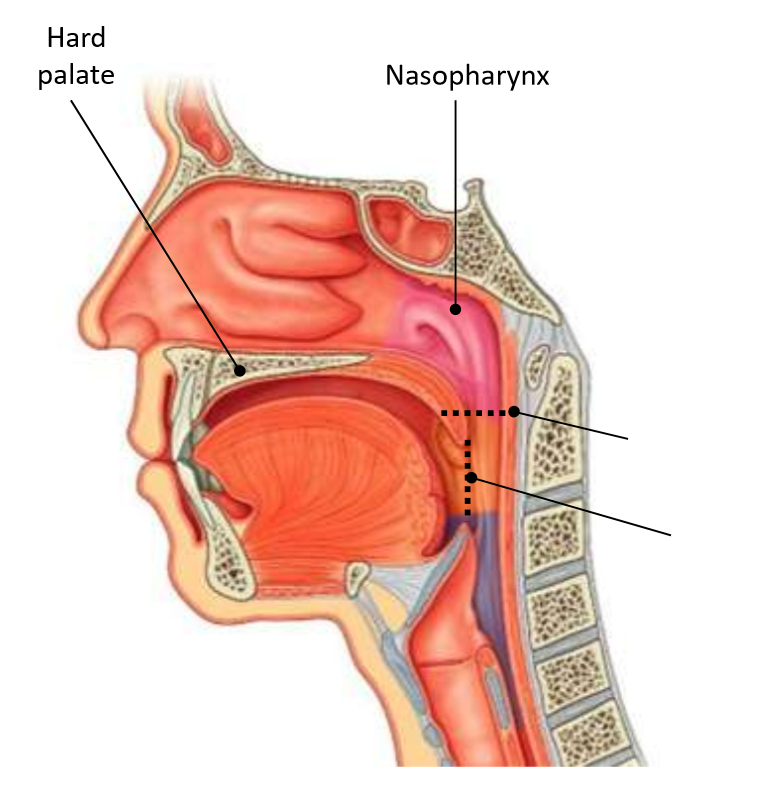
What is the horizontal dotted line?
pharyngeal isthmus
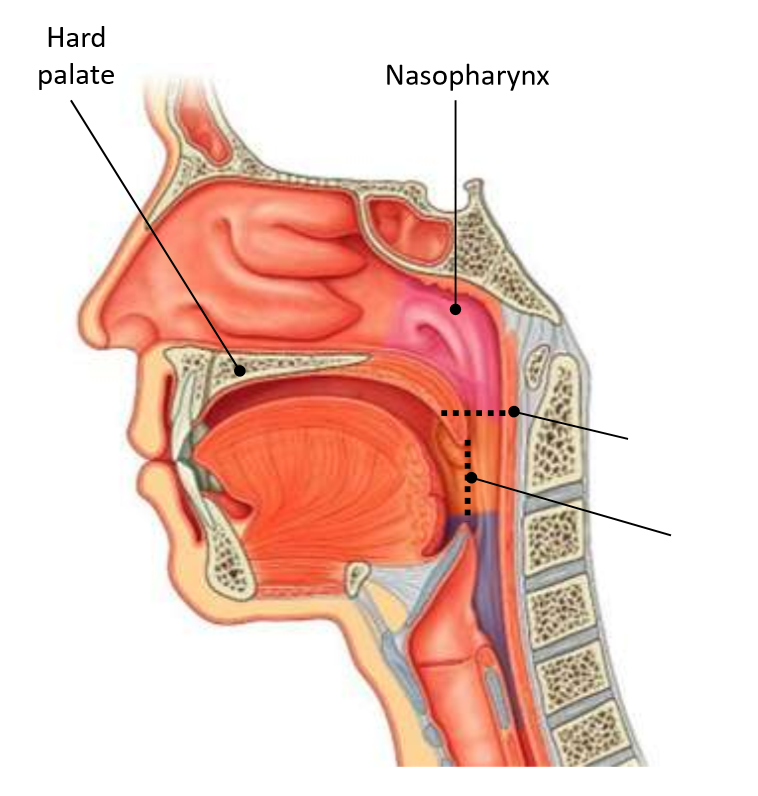
What is the vertical dotted line?
oropharyngeal isthmus
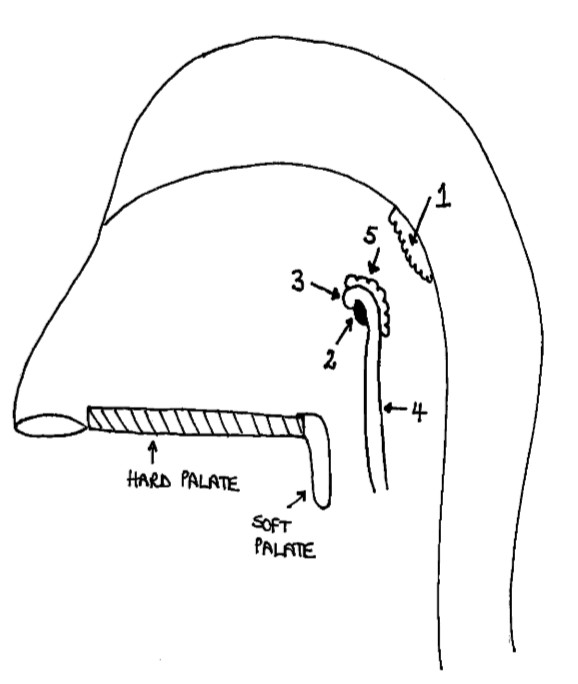
What is 1?
pharyngeal tonsil
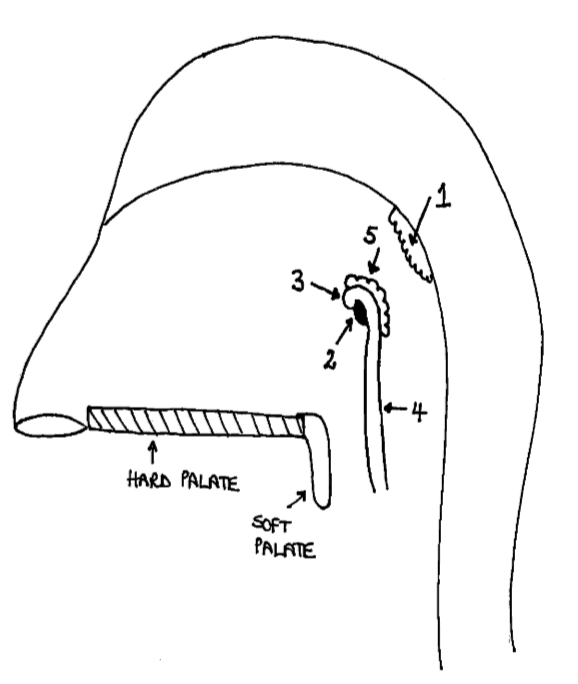
What is 2?
pharyngeal opening of pharyngotympanic tube
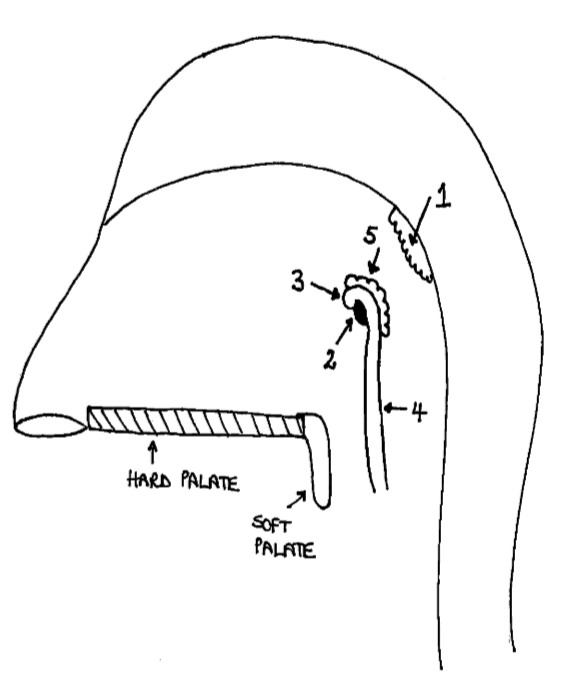
What is 3?
tubal elevation
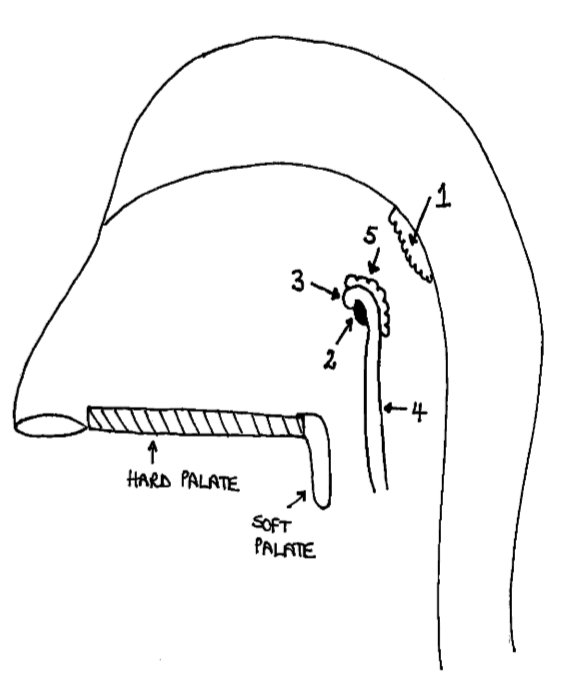
What is 4?
salpingopharyngeal fold
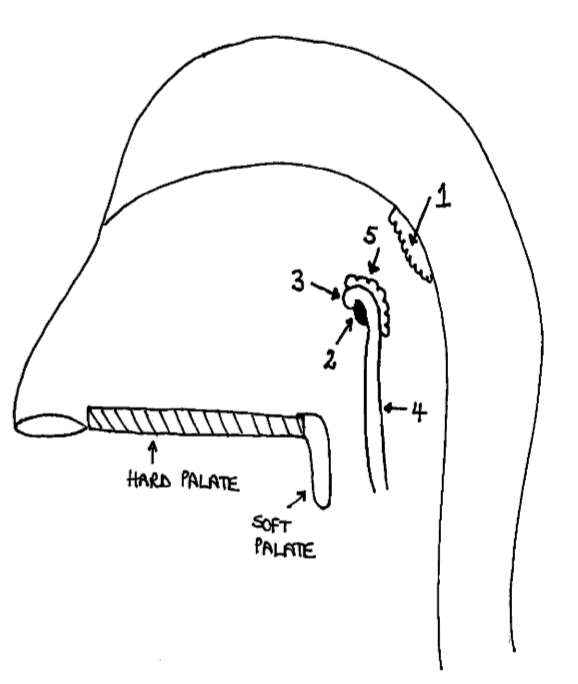
What is 5?
tubal tonsil
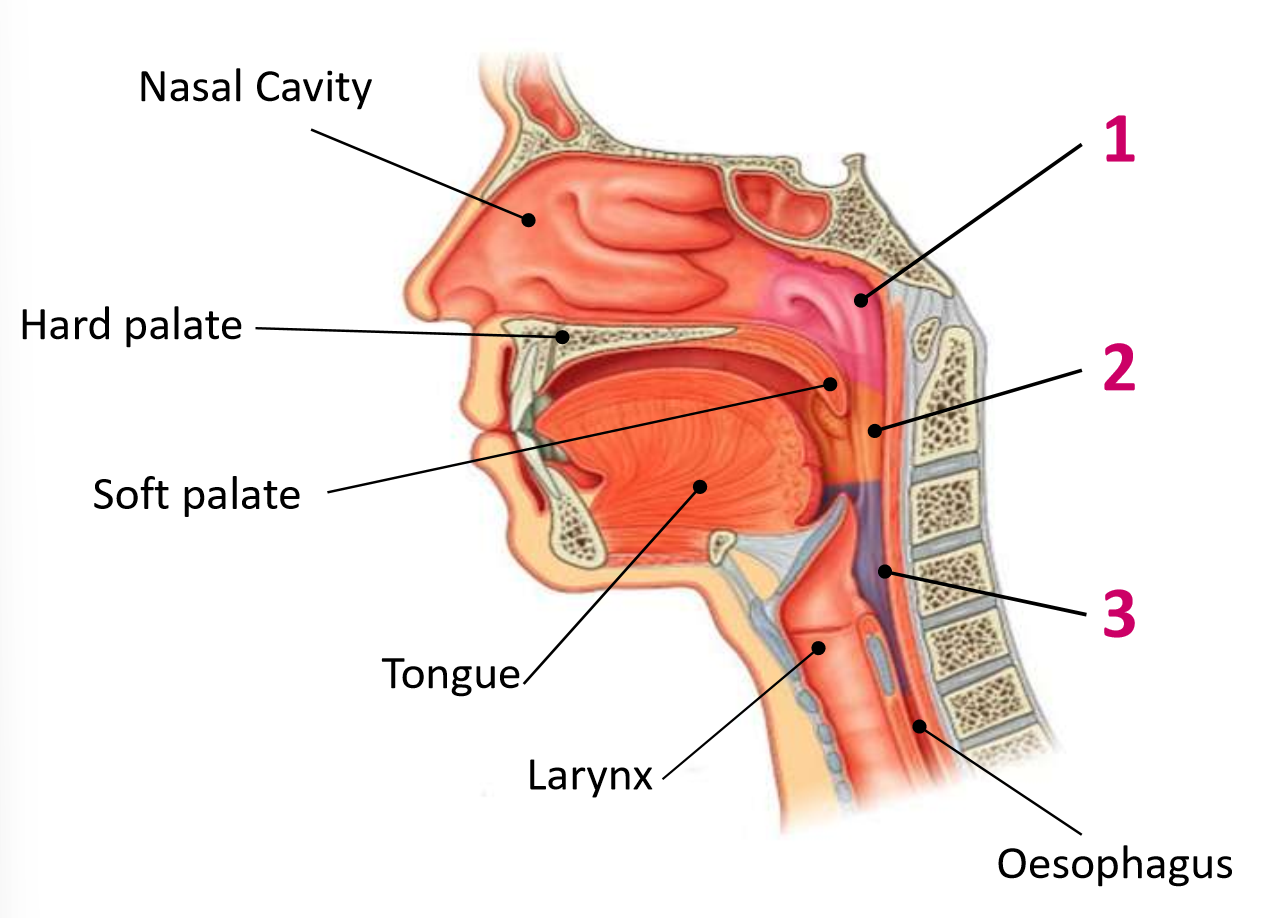
What is the anterior wall of 2?
oropharyngeal isthmus
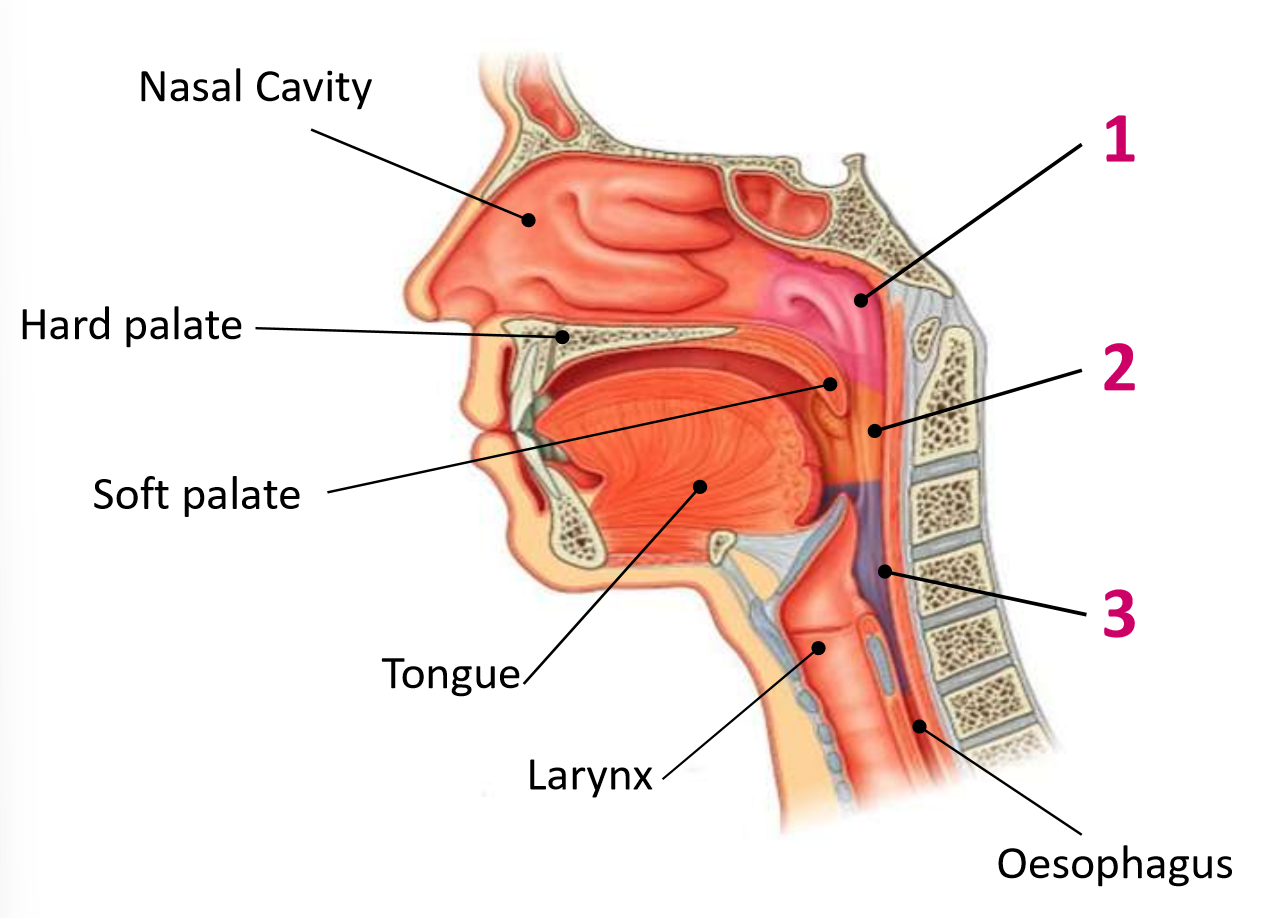
What is the roof of 2?
soft palate
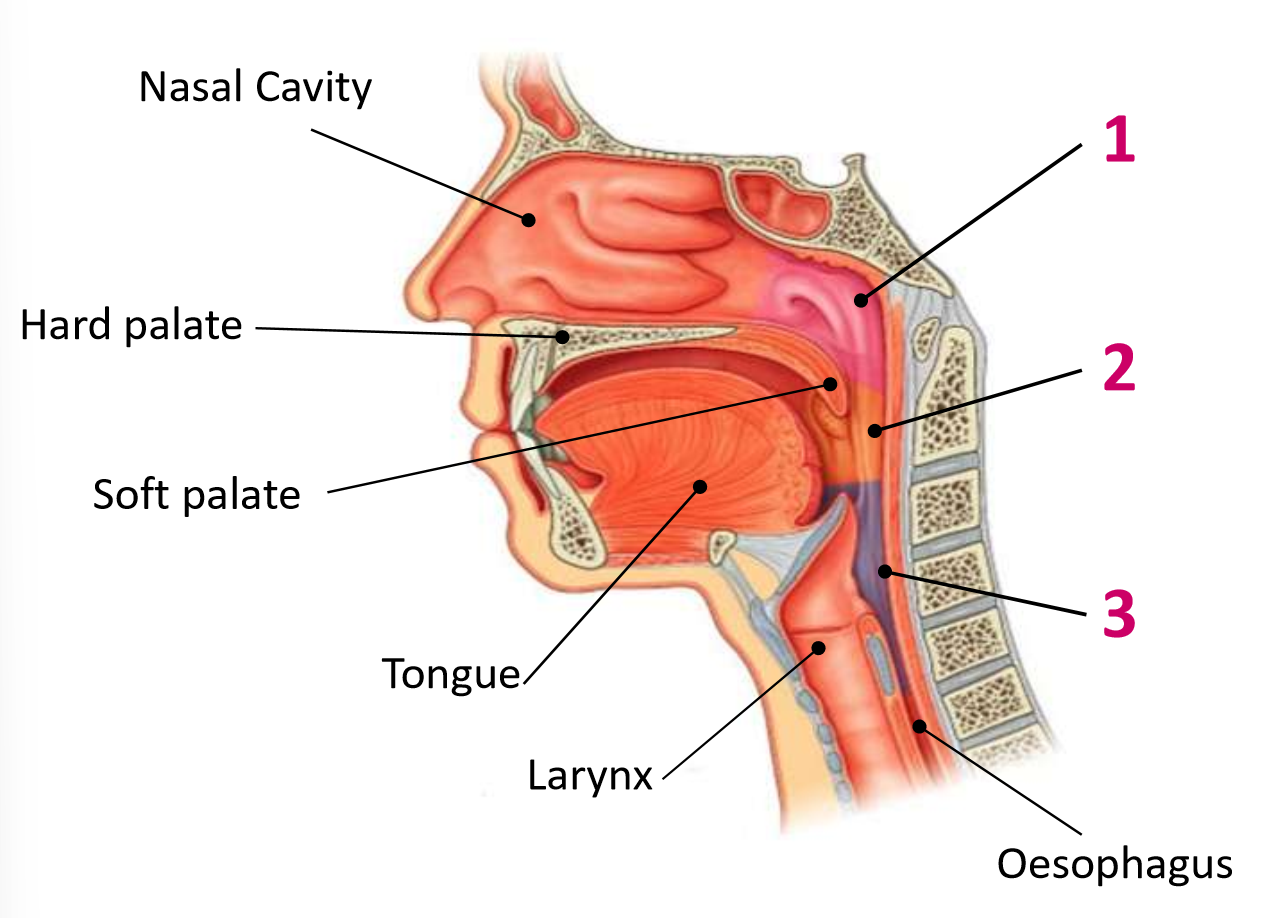
What is the floor of 2?
pharyngeal part of tongue and glossoepiglottic fold
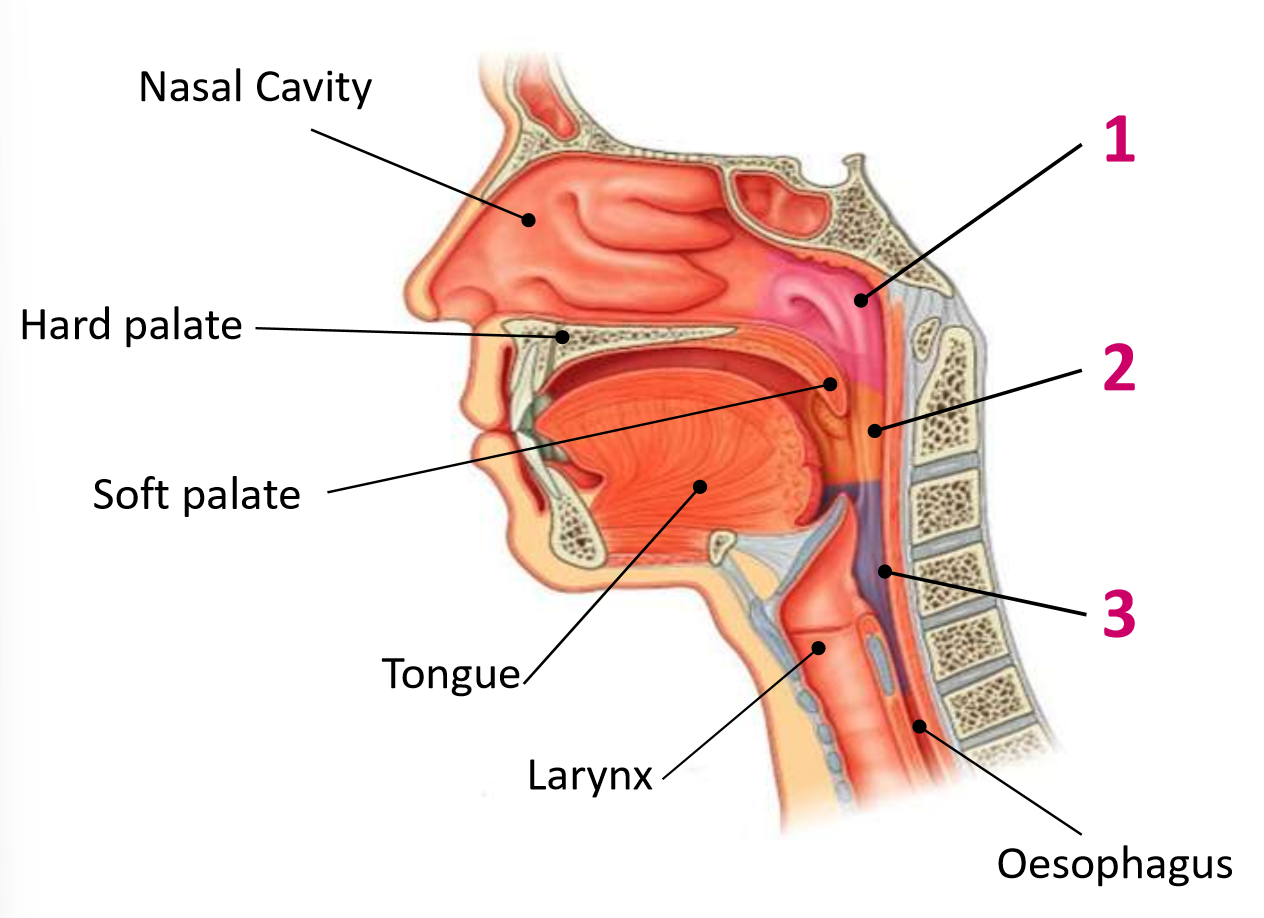
What is the posterior wall of 2?
C2 and upper C3
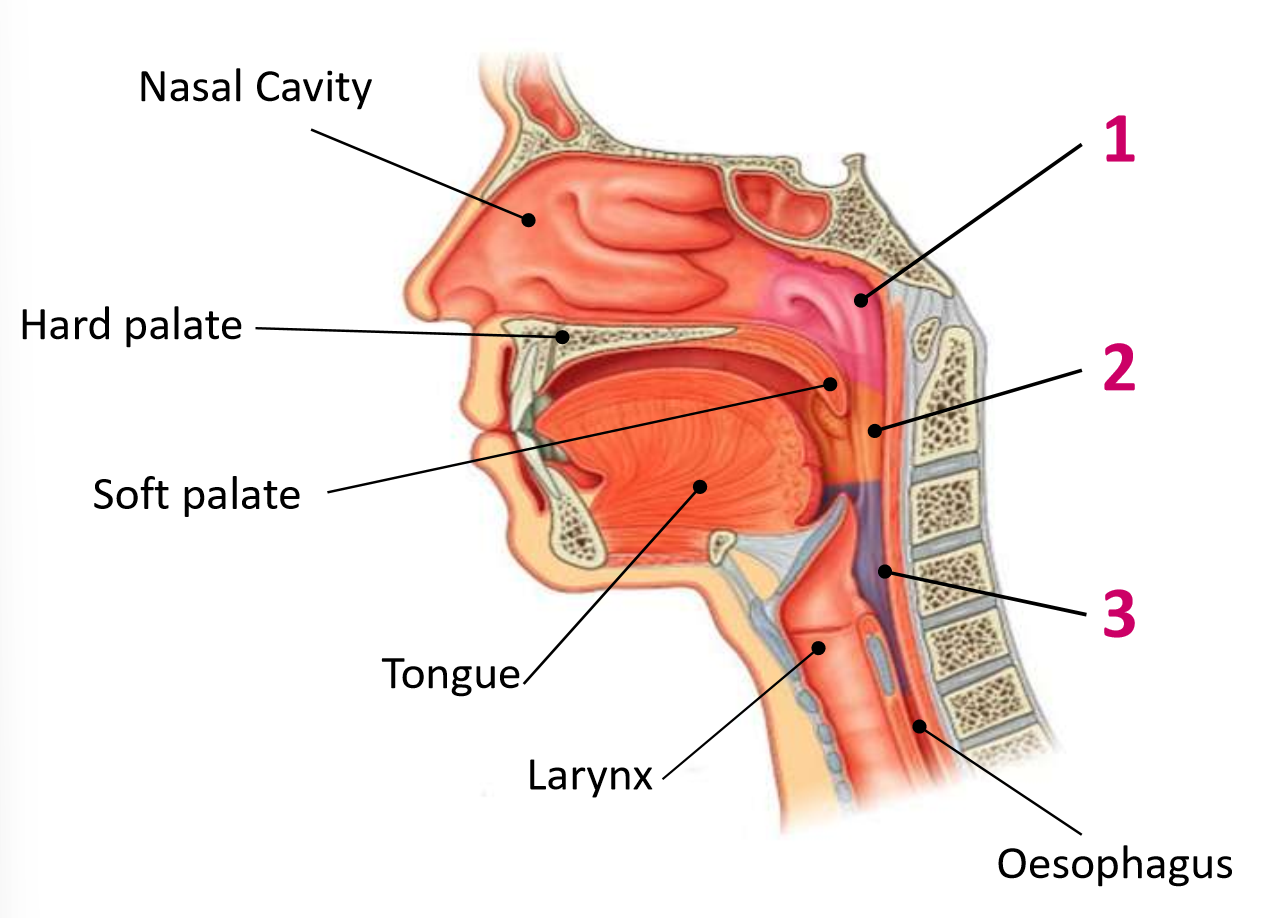
What are the lateral walls of 2?
palatoglossal and palatopharyngeal arches
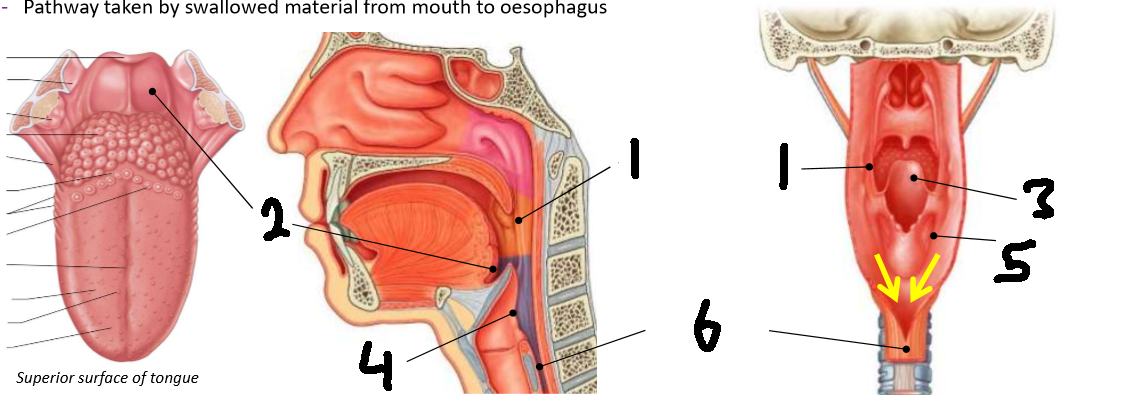
What is 1?
palatopharyngeal arch
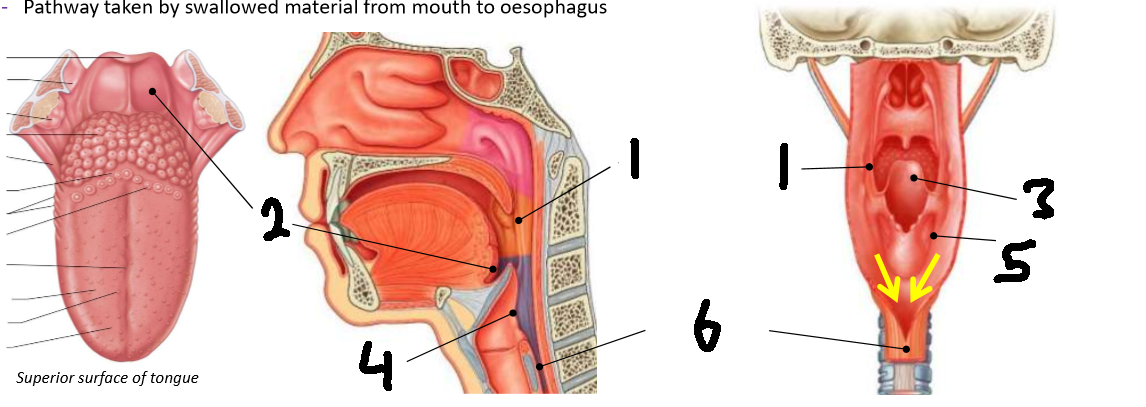
What is 2?
vallecula
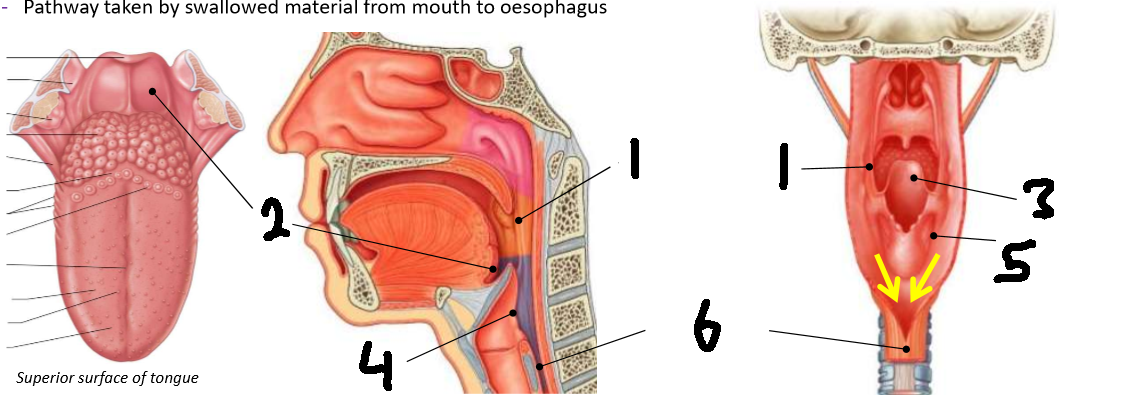
What is 3?
epiglottis
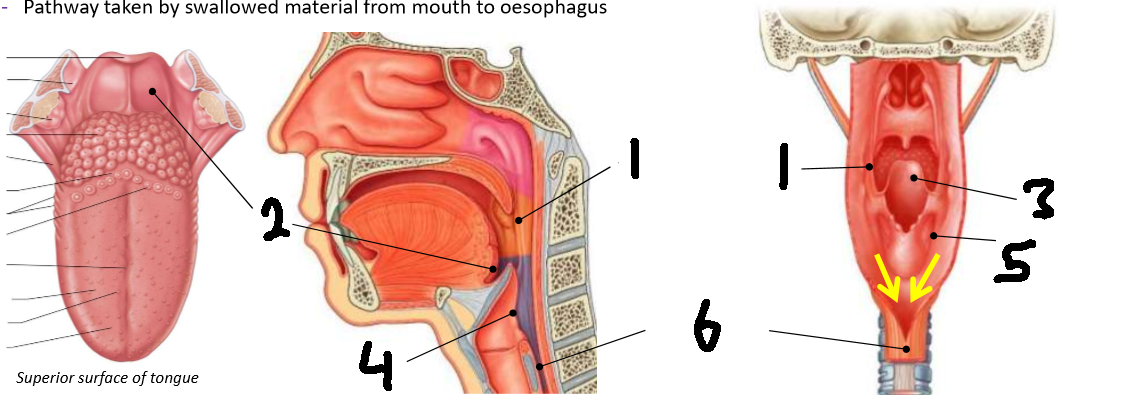
What is 4?
laryngeal inlet
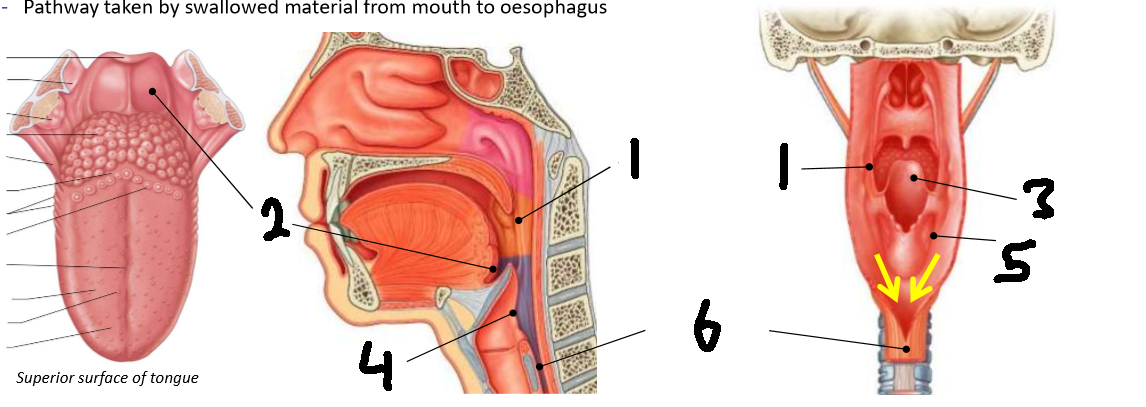
What is 5?
piriform fossa

What is 6?
oesophagus
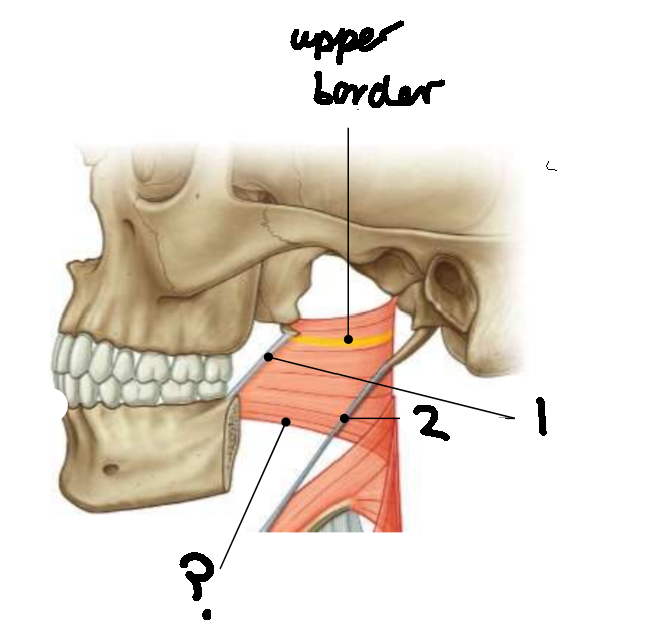
What muscle is this?
superior constrictor
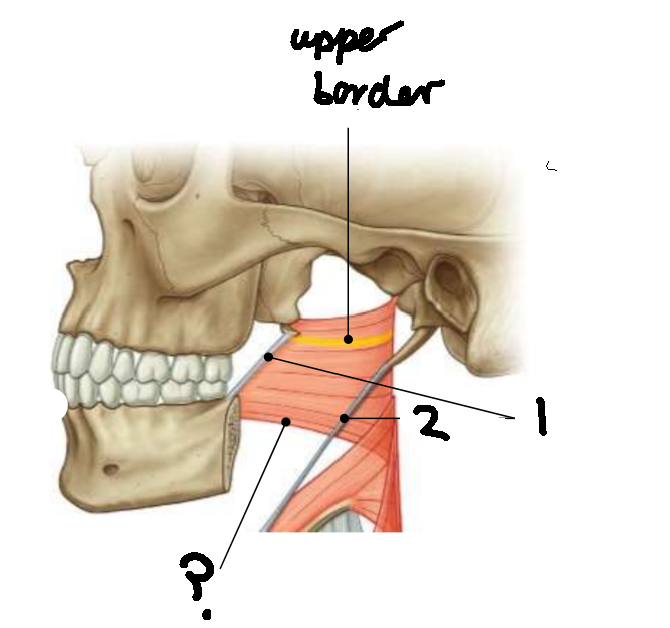
What is the upper border of this muscle?
palatopharyngeal sphincter
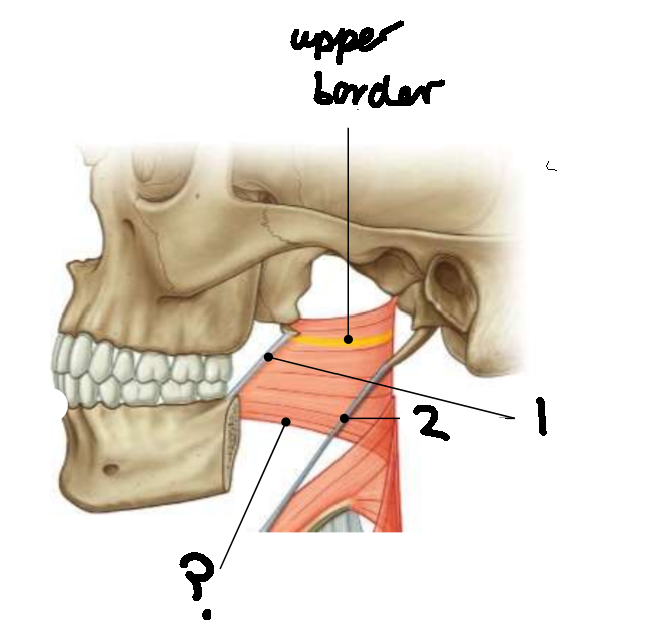
What is 1?
pterygomandibular raphe
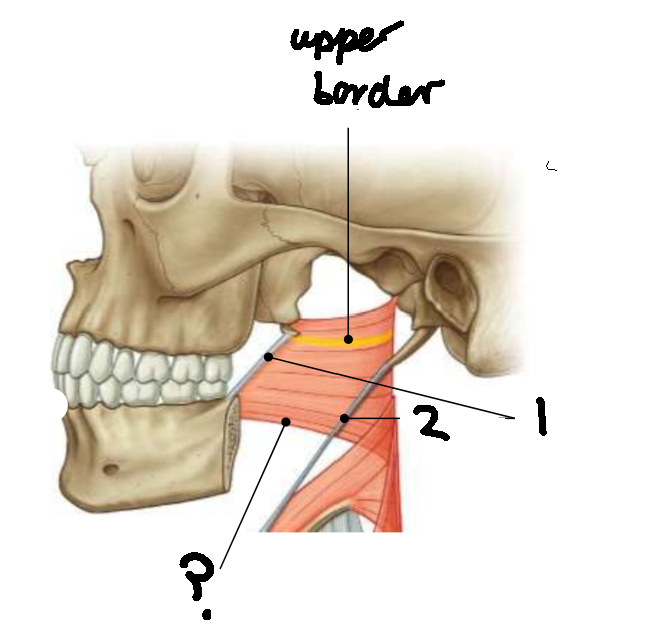
What is 2?
stylohyoid ligament

What are the attachments of this muscle?
pterygoid hamulus, pterygomandibular raphe, posterior end of mylohyoid line → pharyngeal raphe
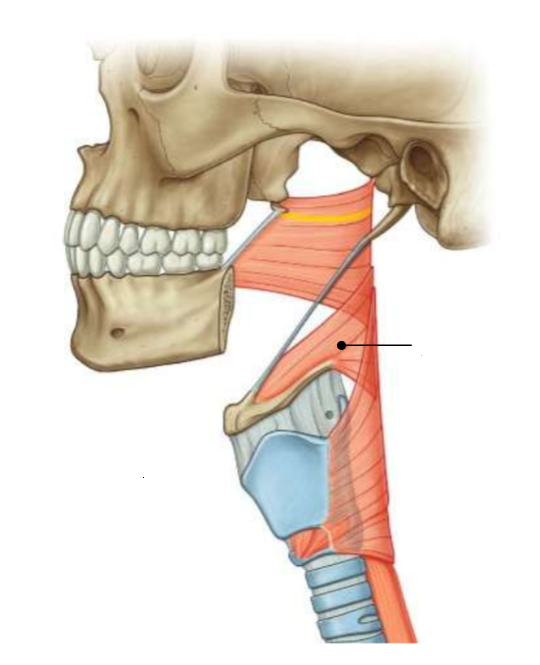
What is this muscle?
middle constrictor
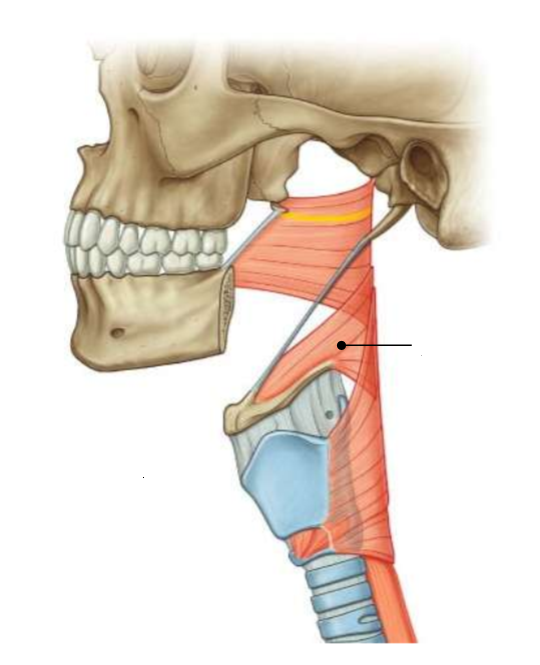
What are the attachments of this muscle?
lower stylohyoid ligament, lesser and greater horns of hyoid → pharyngeal raphe
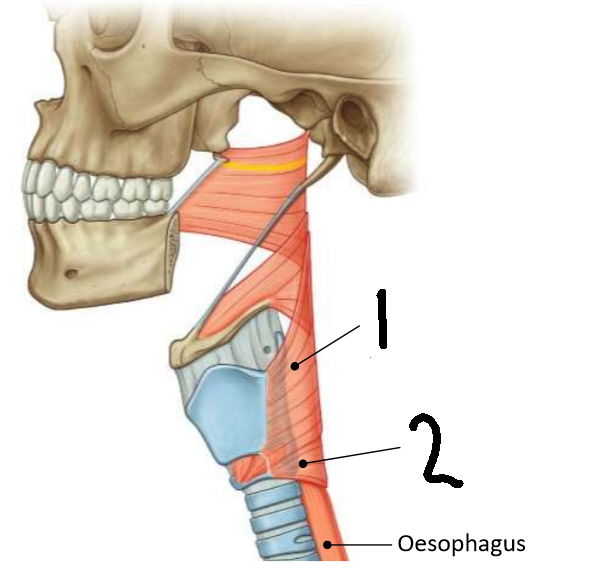
What muscle is this?
inferior constrictor
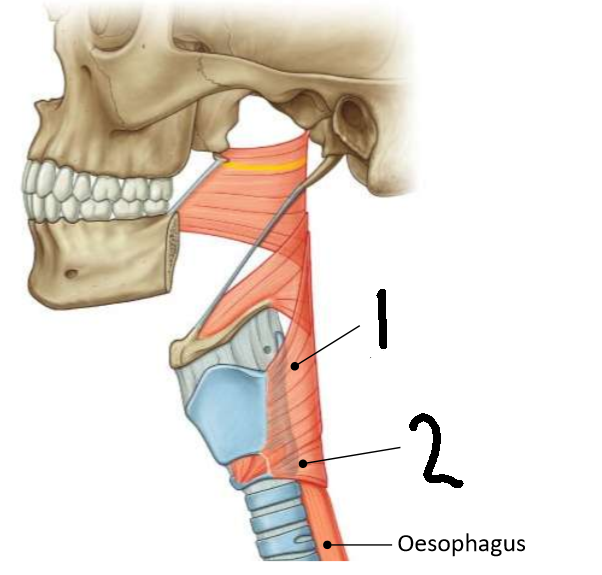
Which part of the muscle is 1?
thyropharyngeus
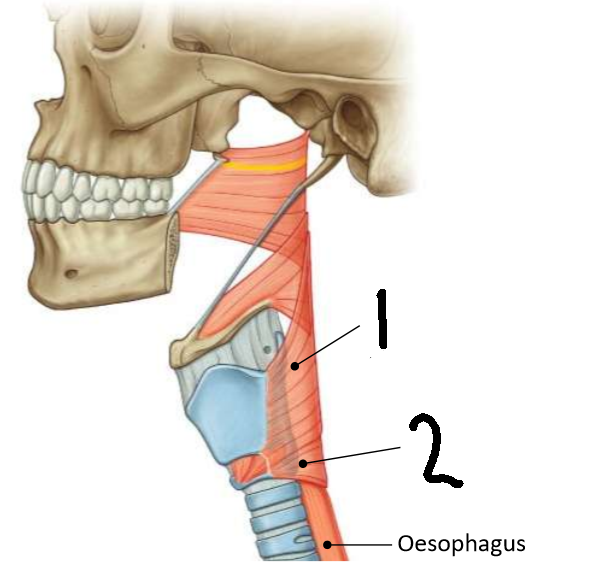
Which part of the muscle is 2?
cricopharyngeus
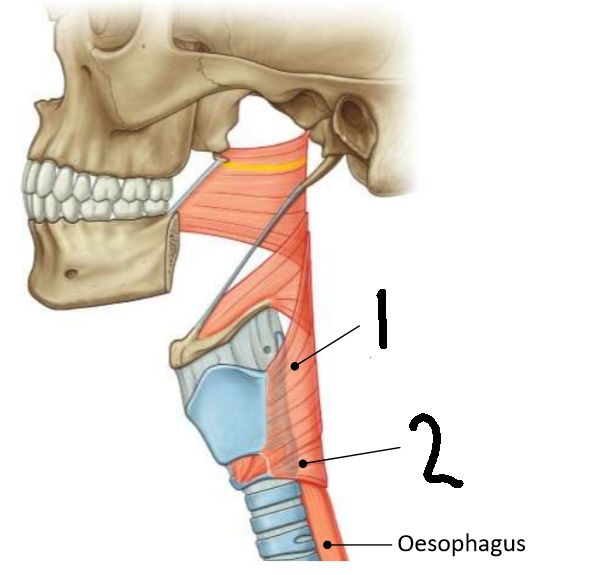
What are the attachments of this muscle?
oblique line of thyroid cartilage, cricothyroid tendon, cricoid cartilage → pharyngeal raphe
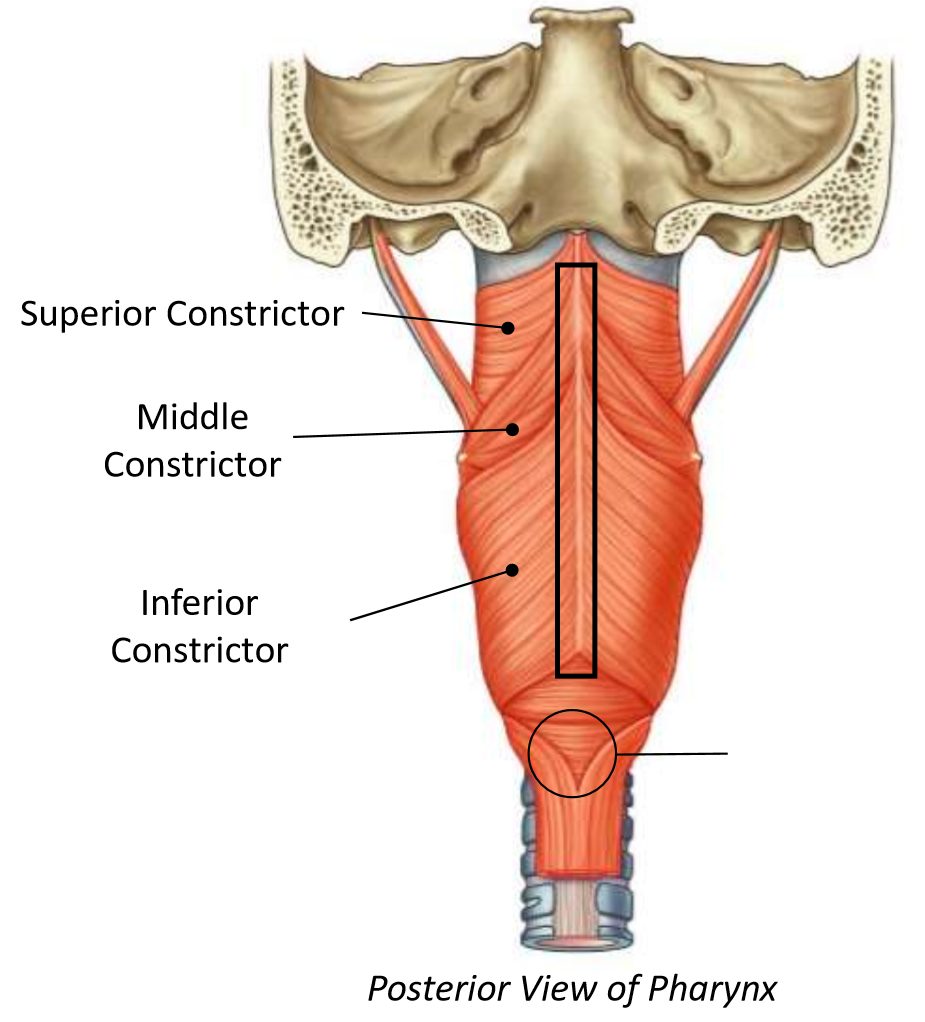
What is in the rectangle?
pharyngeal raphe
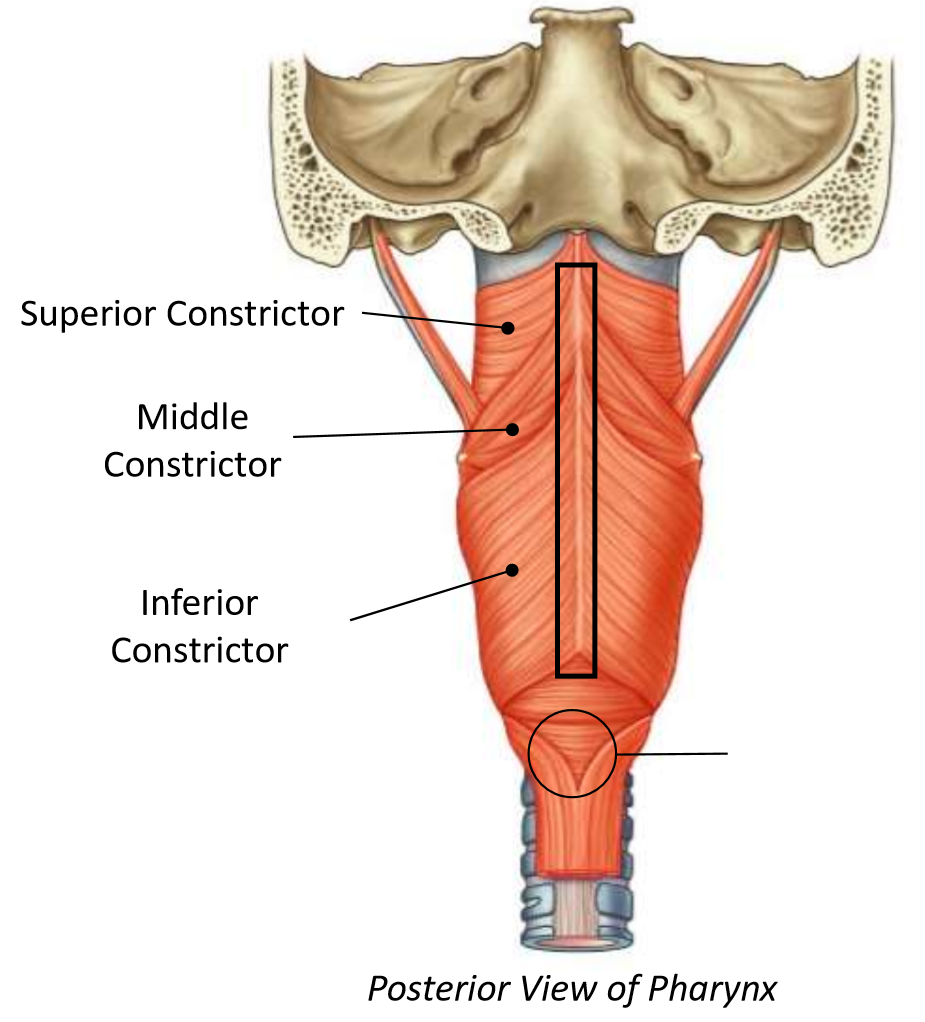
What is in the circle?
killians dehiscence
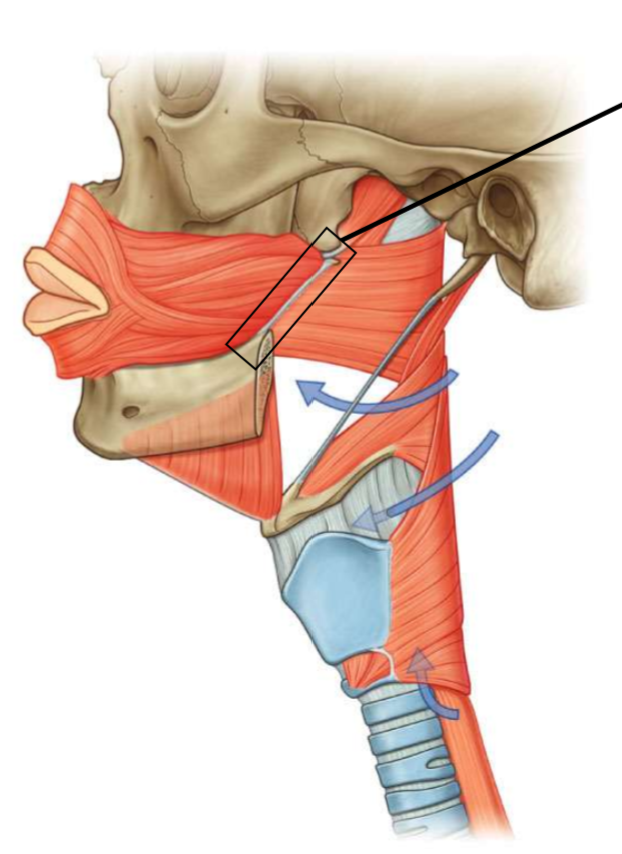
What is in the rectangle?
pterygomandibular raphe
What is the function of the longitudinal/“-pharyngeus” muscles?
elevates the pharyngeal wall
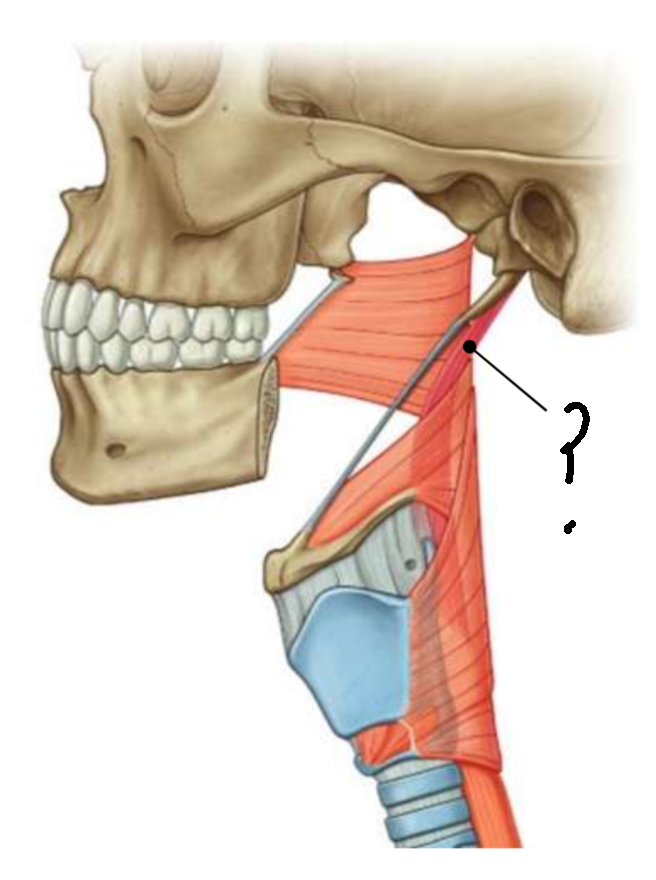
What is this muscle?
stylopharyngeus
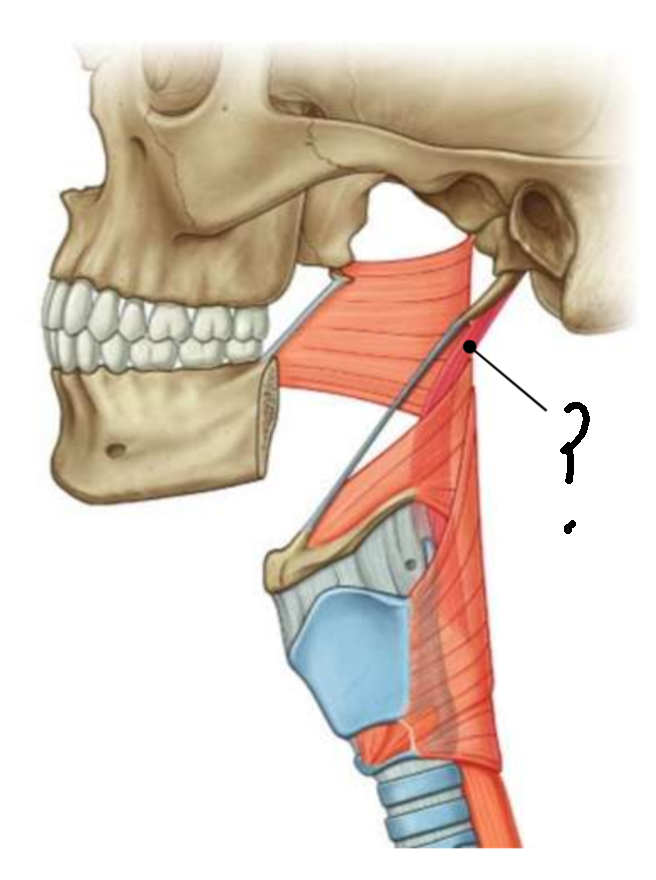
What are the attachments of this muscle?
medial surface of the styloid process → deep pharyngeal wall

What innervates this muscle?
glossopharyngeal nerve
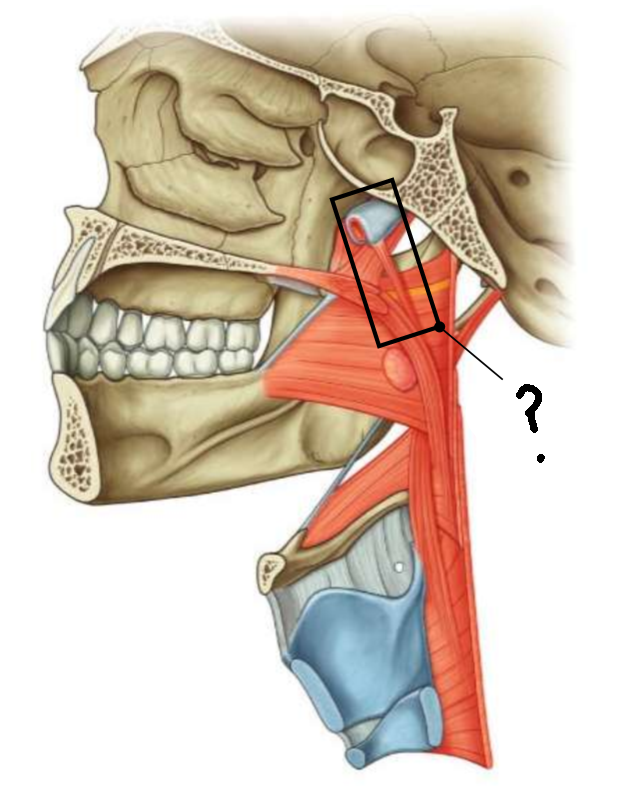
What muscle is this?
salpingopharyngeus
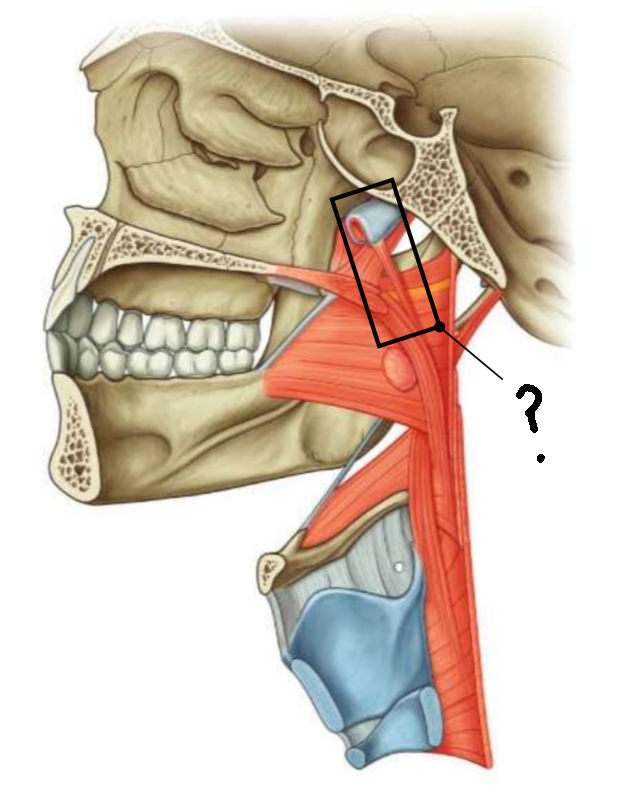
What are the attachments of this muscle?
cartilage of the pharyngotympanic tube → deep pharyngeal wall
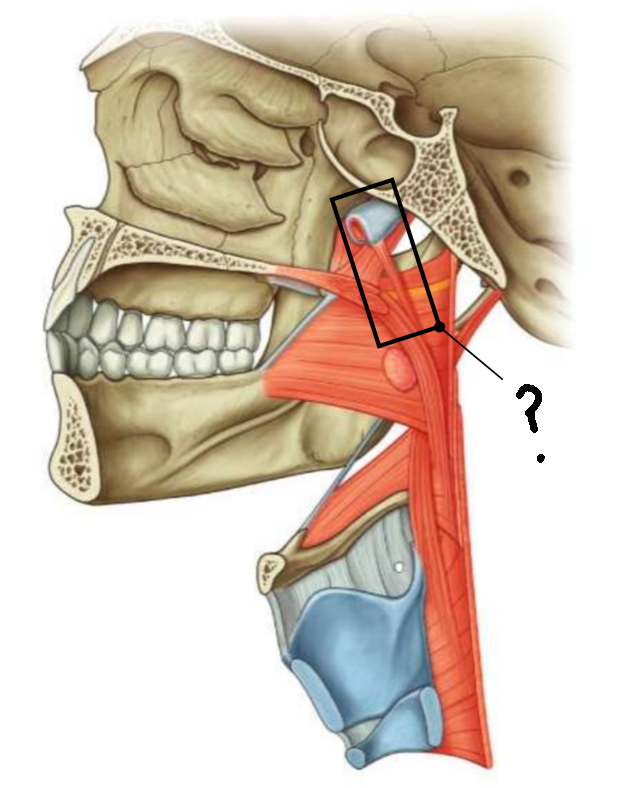
What innervates this muscle?
vagus nerve
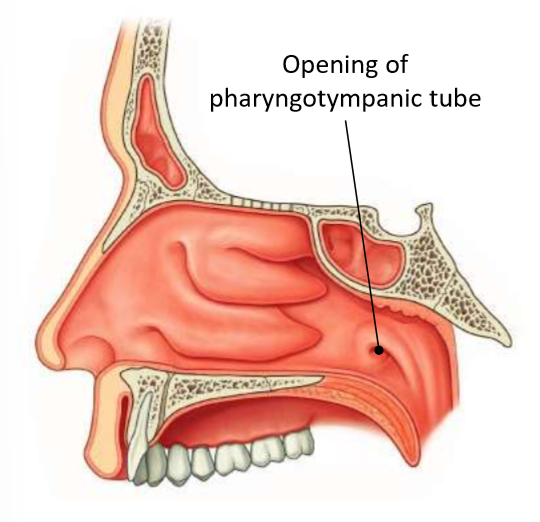
What does the pharyngotympanic tube connect?
middle ear and nasopharynx
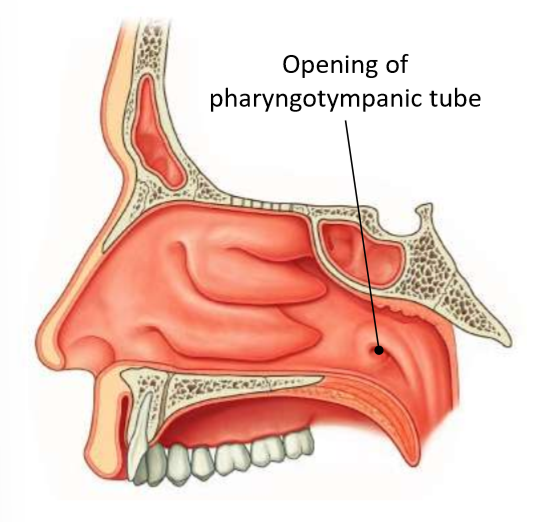
What does the pharyngotympanic tube do?
equalises pressure on each side of the tympanic membrane
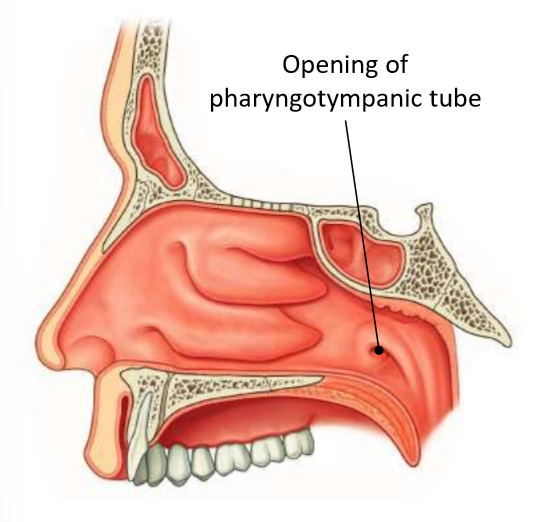
What are the two parts of the pharyngotympanic tube?
bony third near the middle ear, rest is cartilaginous
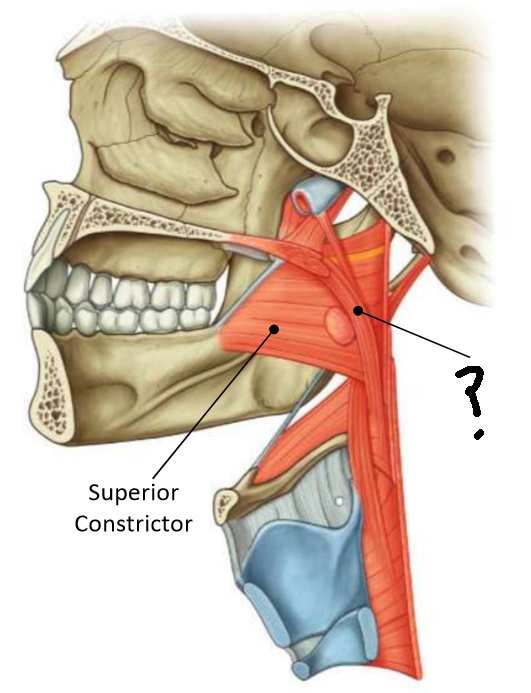
What muscle is this?
palatopharyngeus
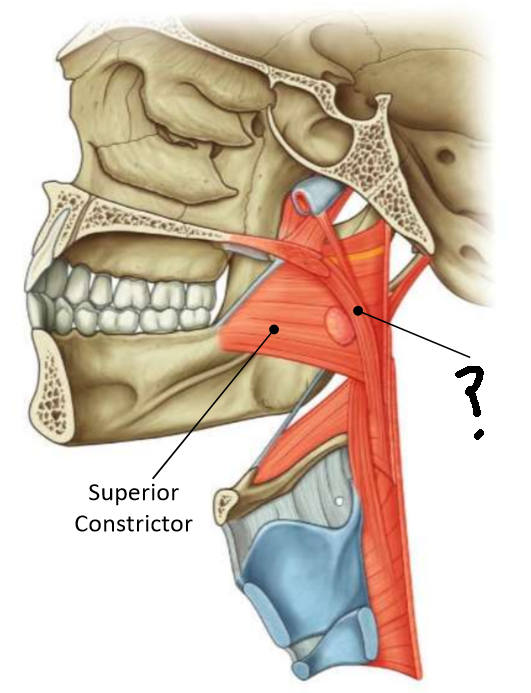
What are the attachments of this muscle?
upper surface of palatine aponeurosis → deep pharyngeal wall
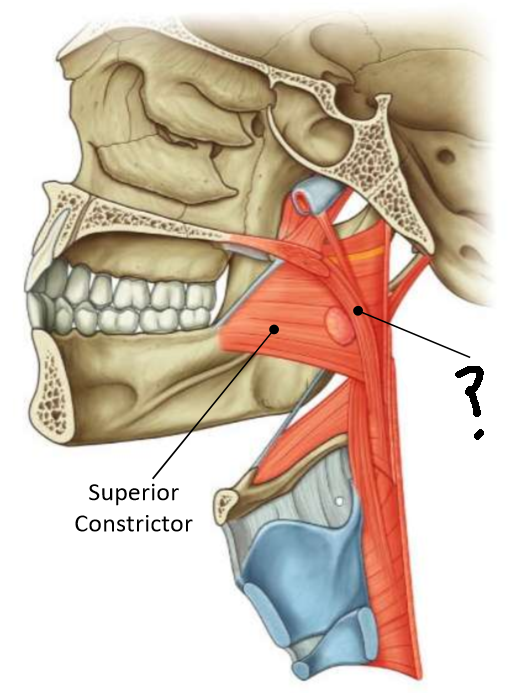
What is the function of this muscle?
closes the oropharyngeal isthmus by depressing the palate
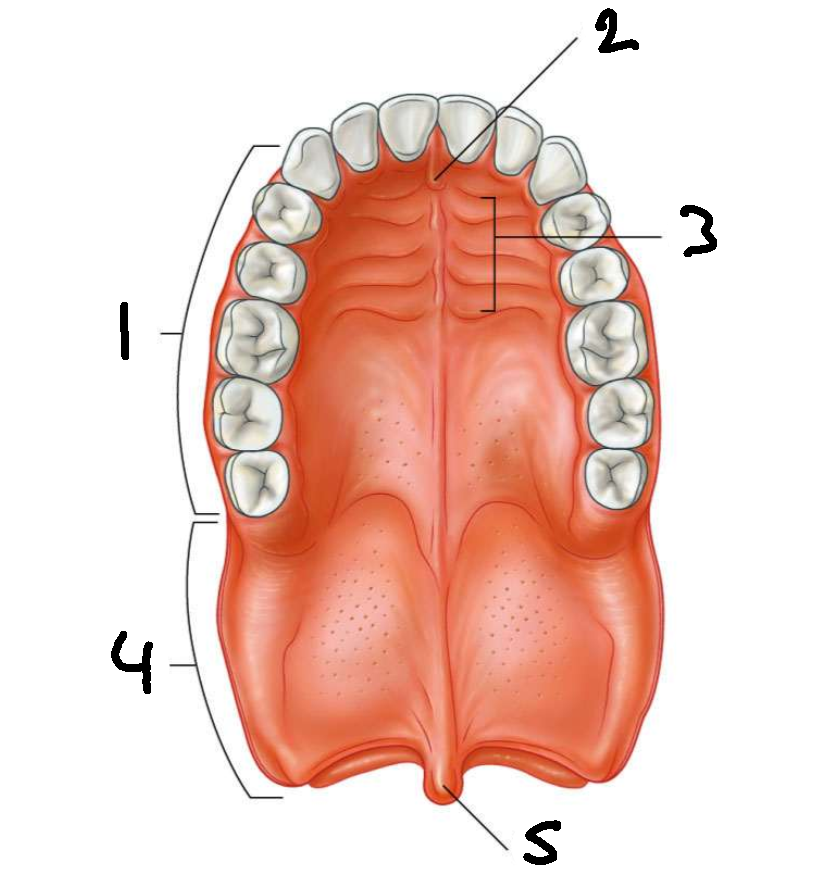
What is 1?
hard palate
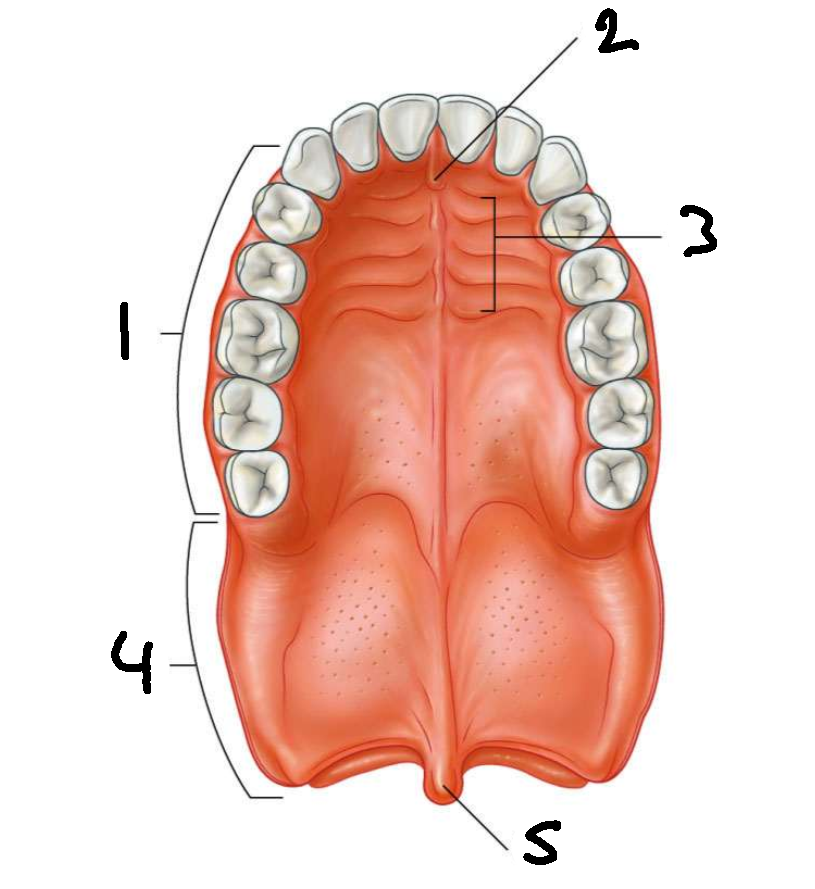
What is 2?
incisive papilla
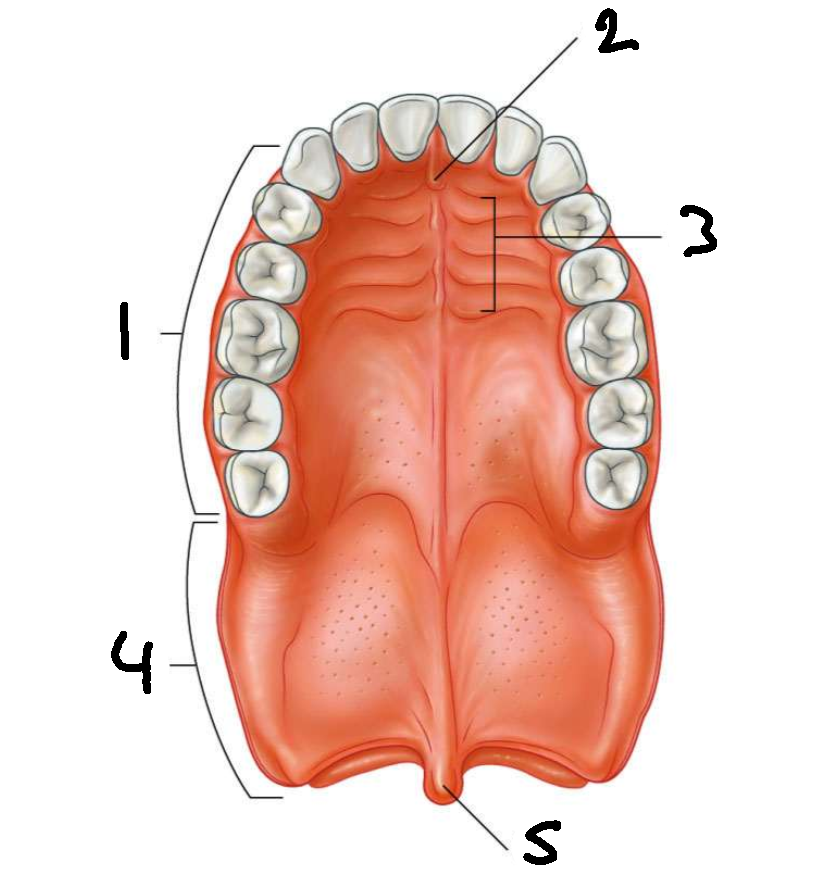
What is 3?
palatine rugae
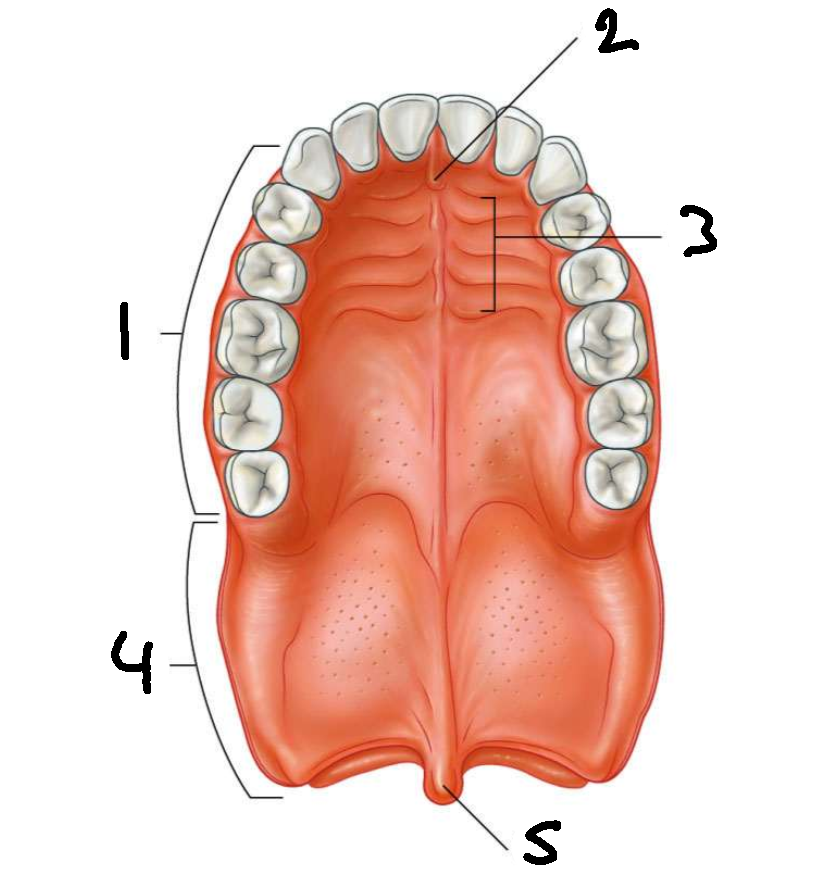
What is 4?
soft palate
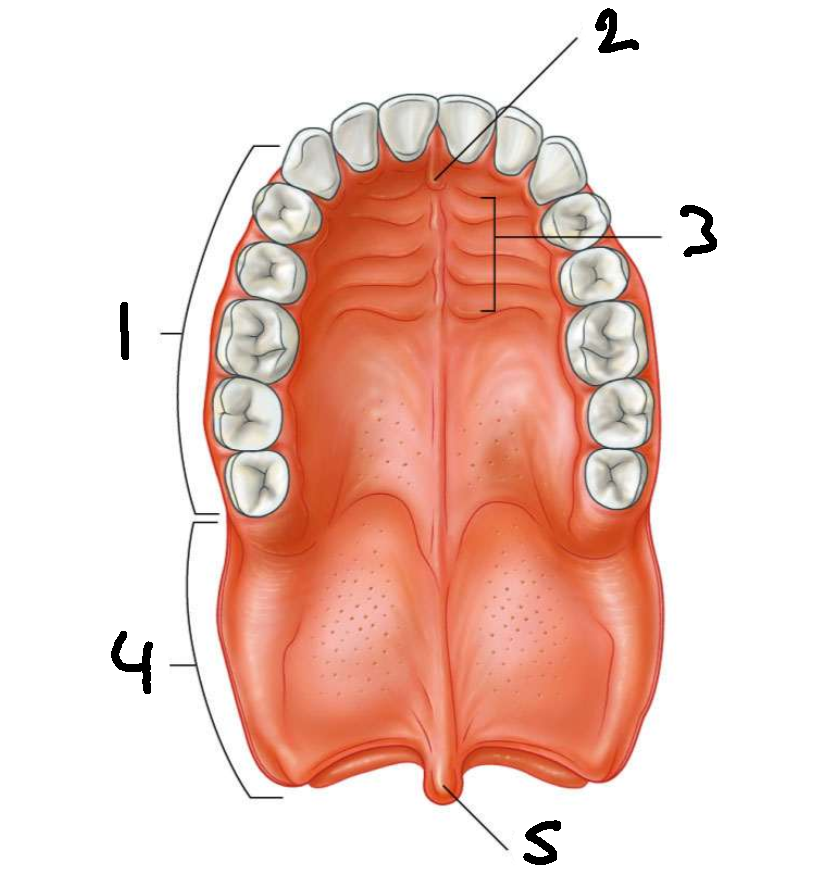
What is 5?
uvula
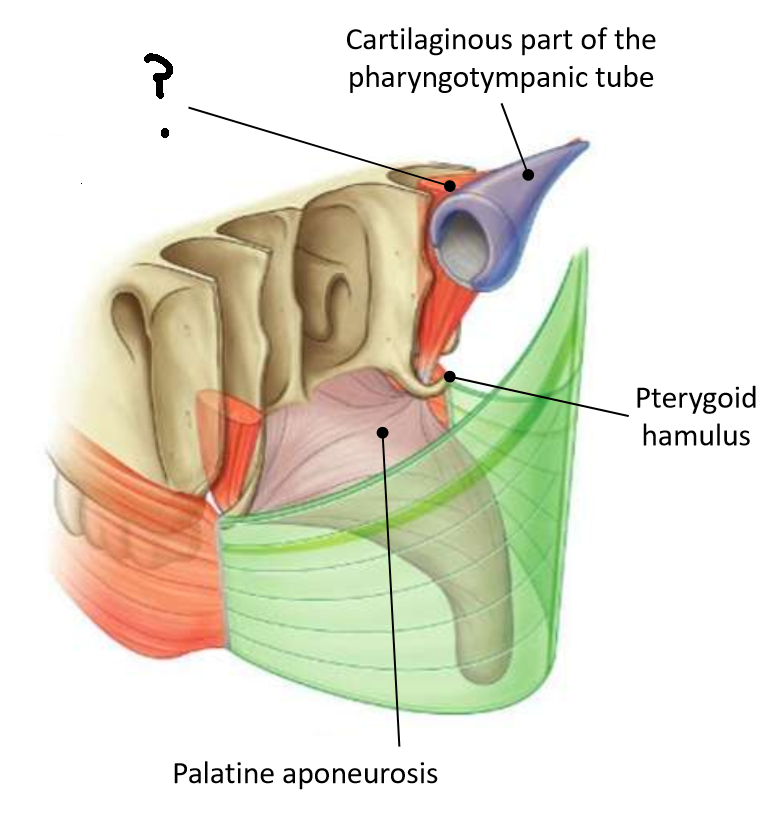
Which muscle is this?
tensor veli palatini
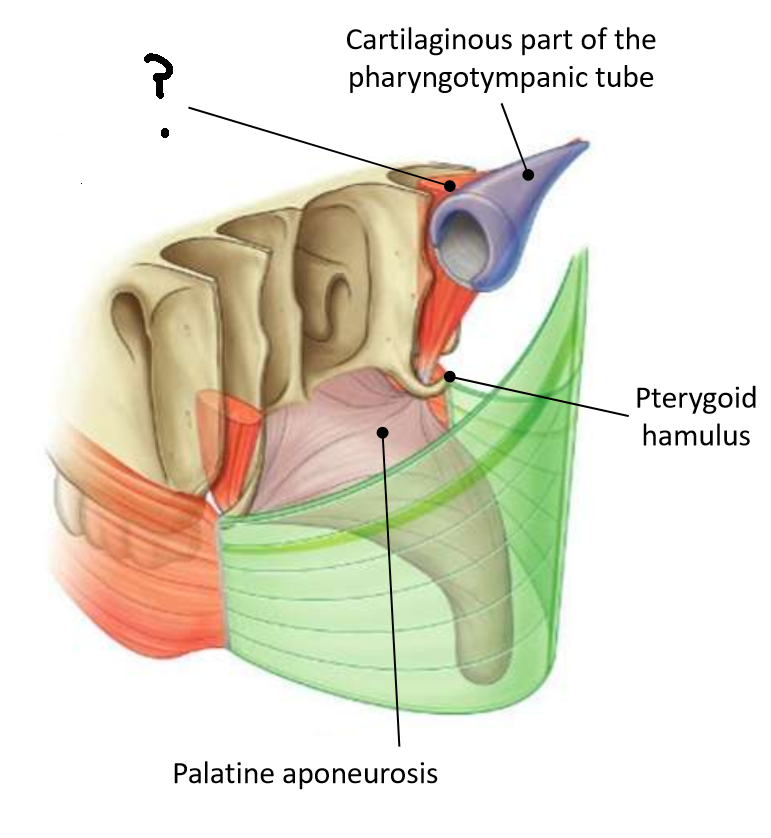
What are the two parts of this muscle?
muscular and fibrous
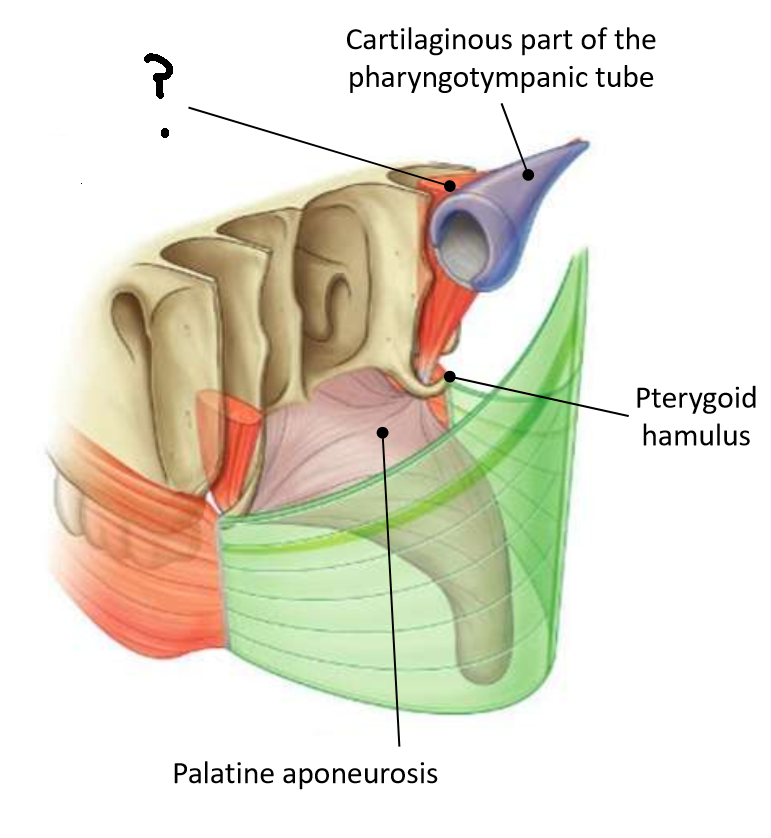
What is the function of this muscle?
tenses soft palate, opens pharyngotympanic tube

What innervates this muscle?
medial pterygoid nerve of mandibular branch of trigeminal

Which muscle is this?
levator veli palatini
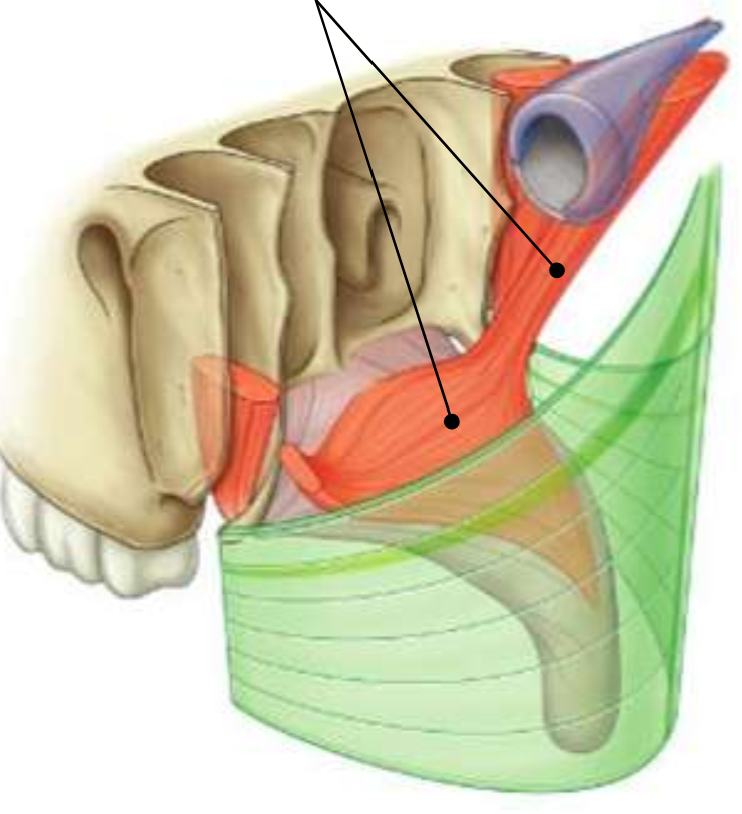
What are the attachments of this muscle?
petrous part of temporal bone and pharyngotympanic tube → palatine aponeurosis
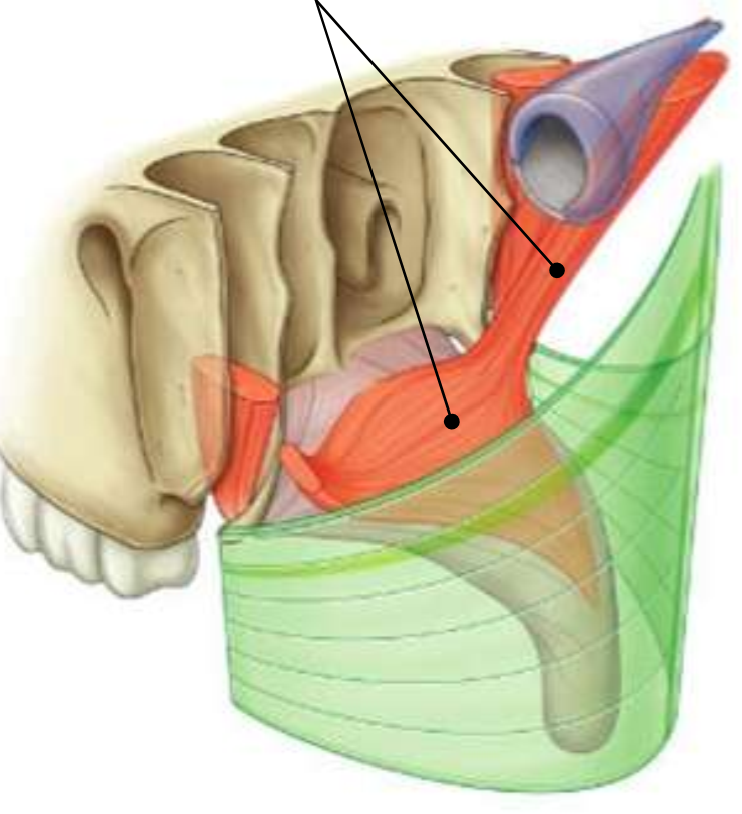
What is the function of this muscle?
lifts soft palate to close nasopharyngeal isthmus
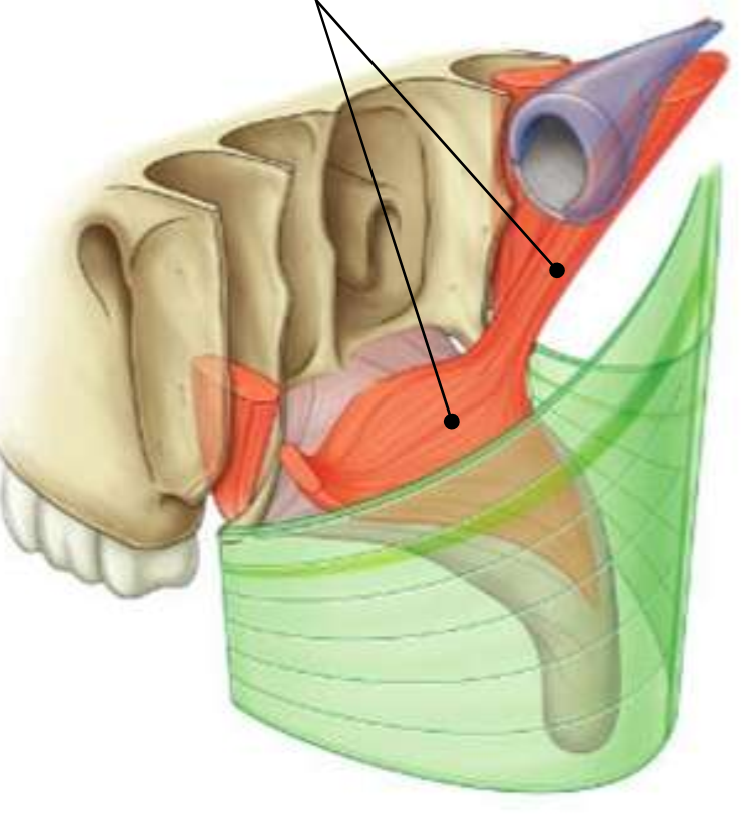
What innervates this muscle?
pharyngeal branch of pharyngeal plexus of vagus nerve
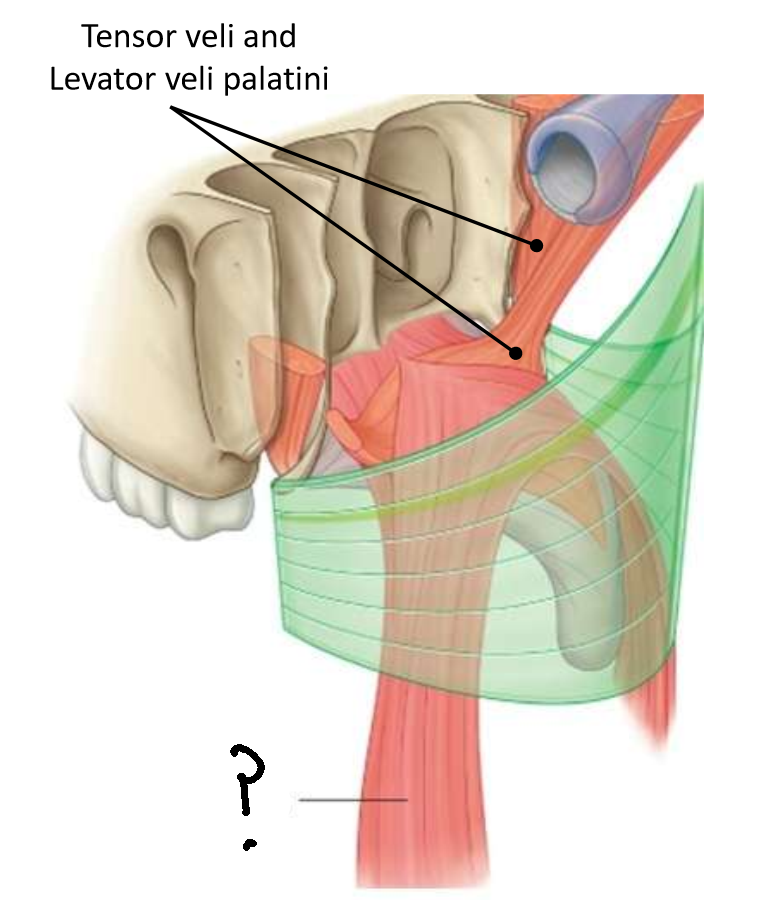
Which muscle is this?
palatopharyngeus
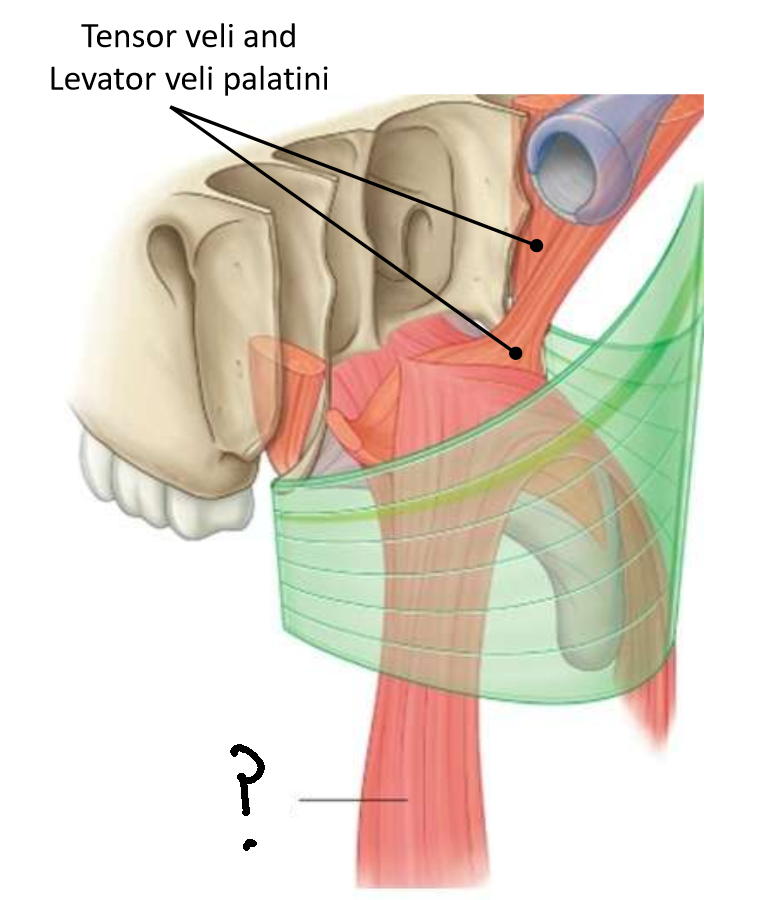
What is the function of this muscle?
elevates the pharynx, depresses the palate to close the oropharyngeal isthmus
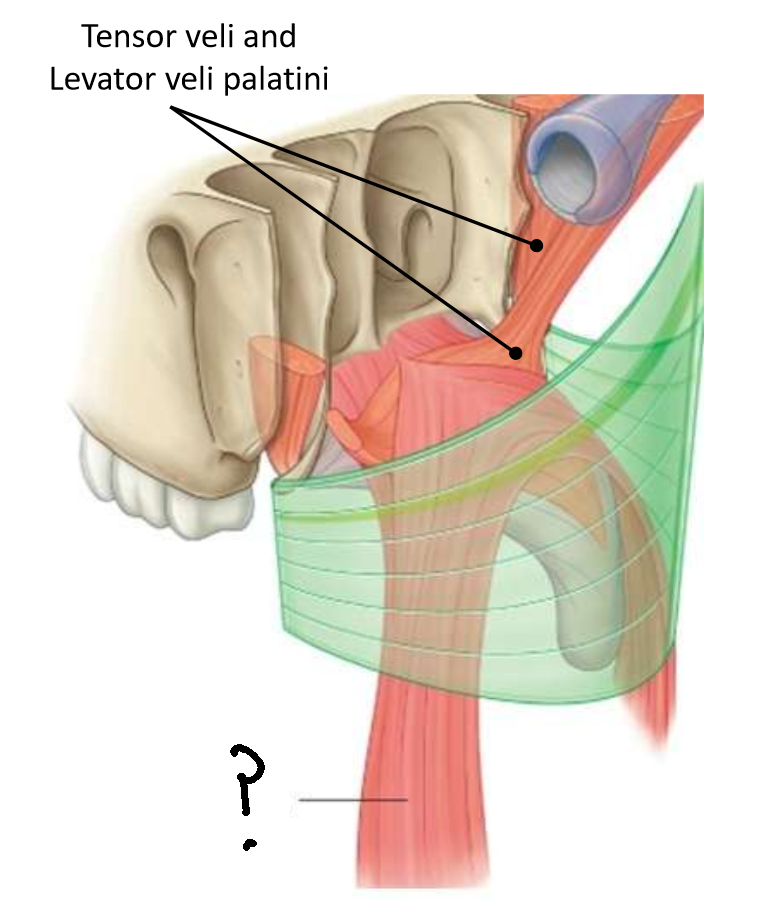
What innervates this muscle?
pharyngeal plexus of vagus nerve
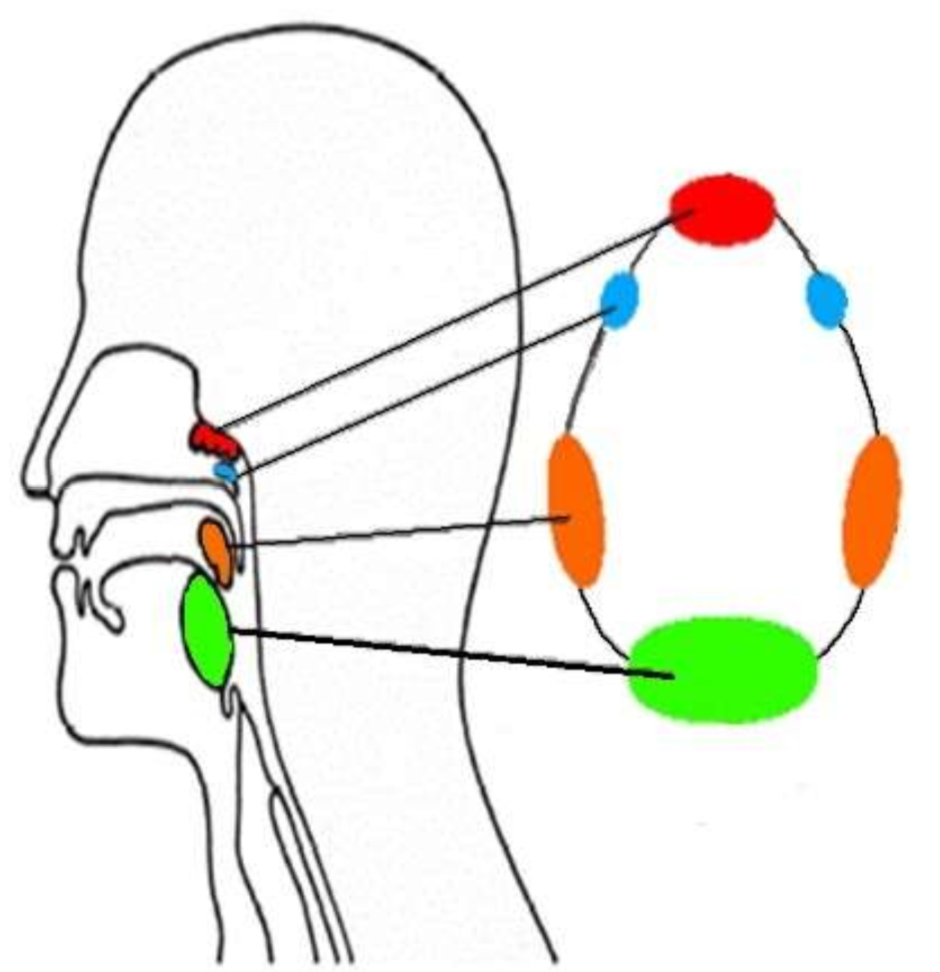
What is this group of structures called?
waldeyers ring

What is in red?
pharyngeal tonsil
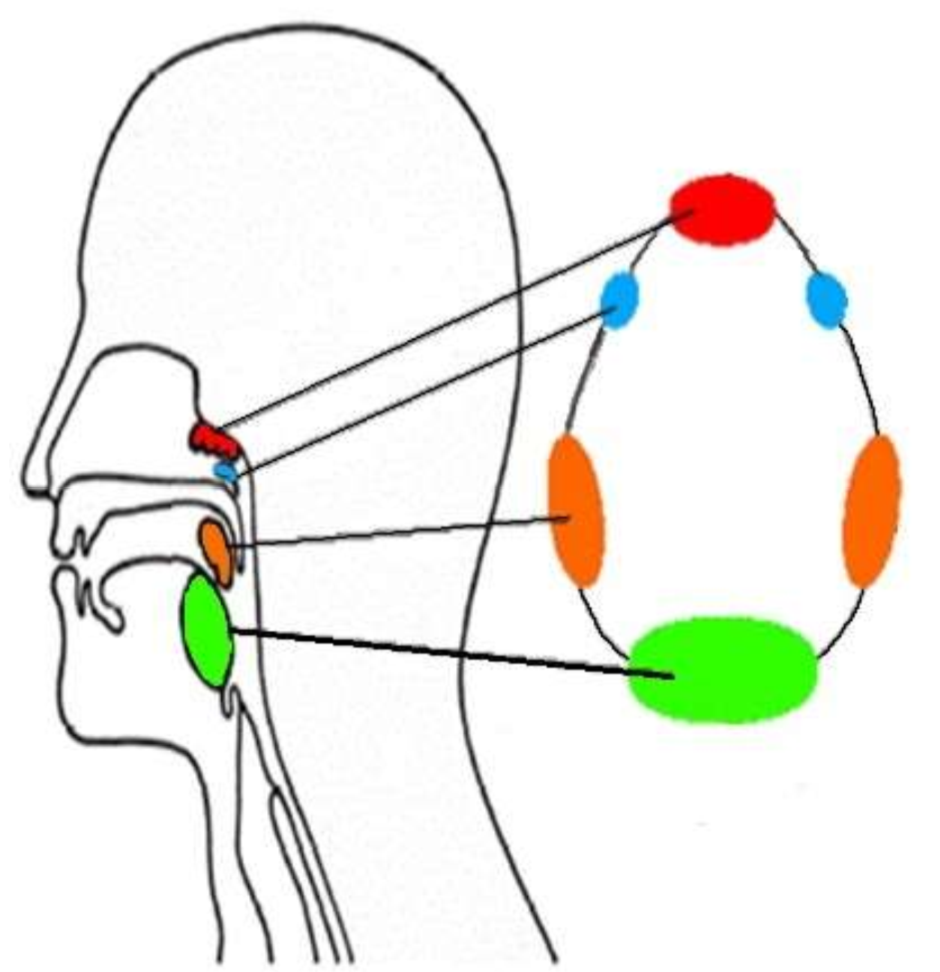
What is in blue?
tubal tonsils
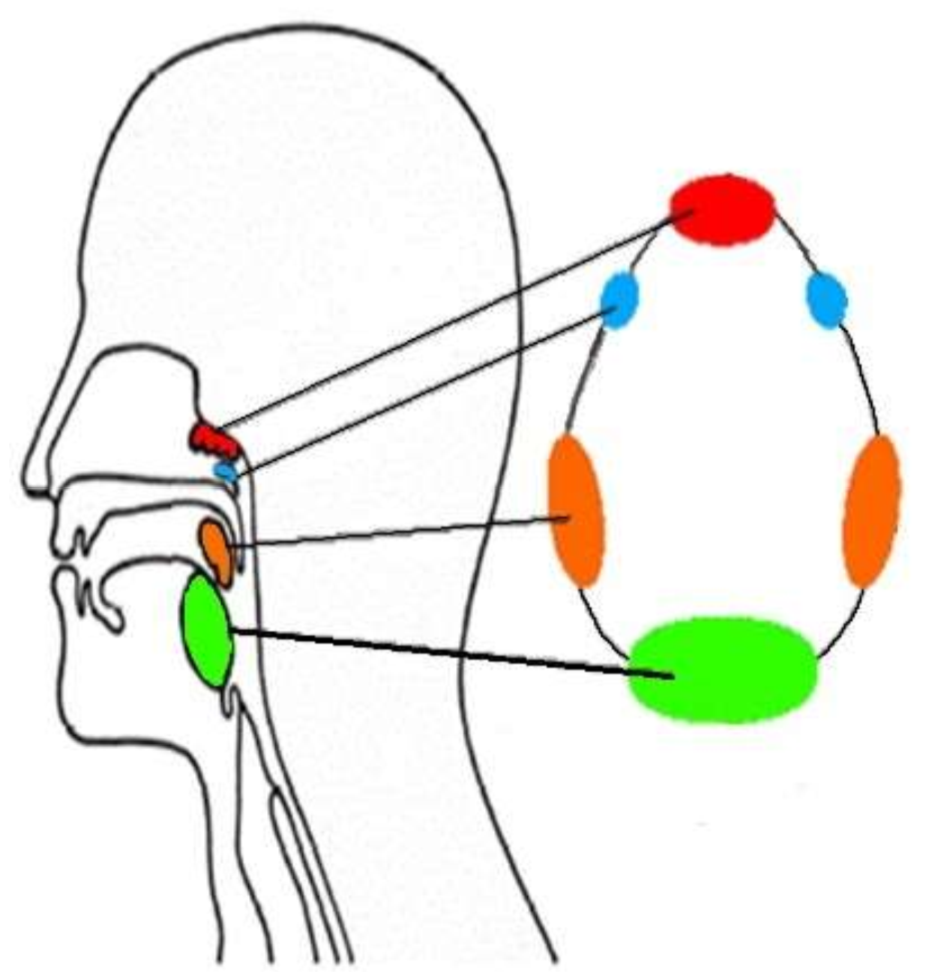
What is in orange?
palatine tonsils
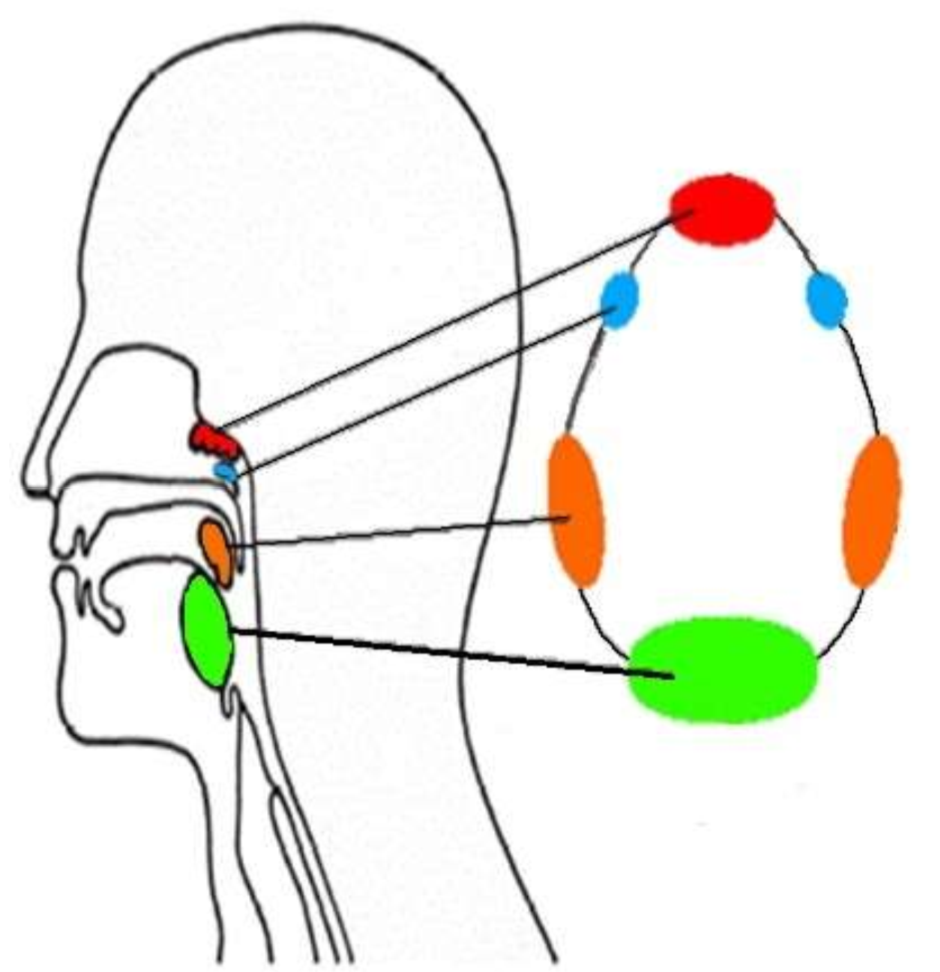
What is in green?
lingual tonsil
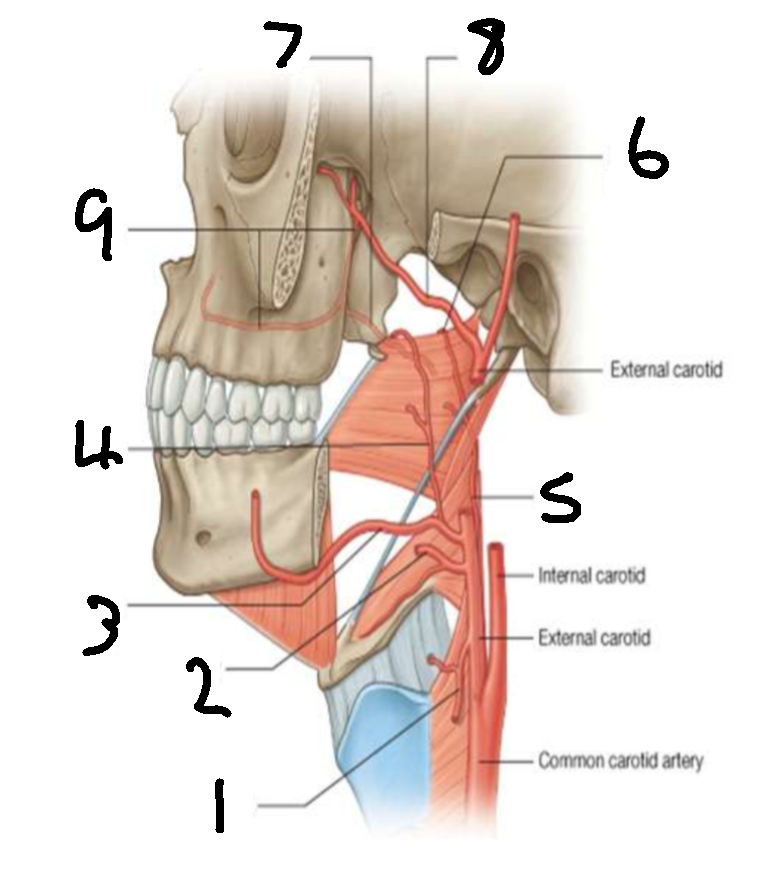
What is 1?
superior thyroid artery
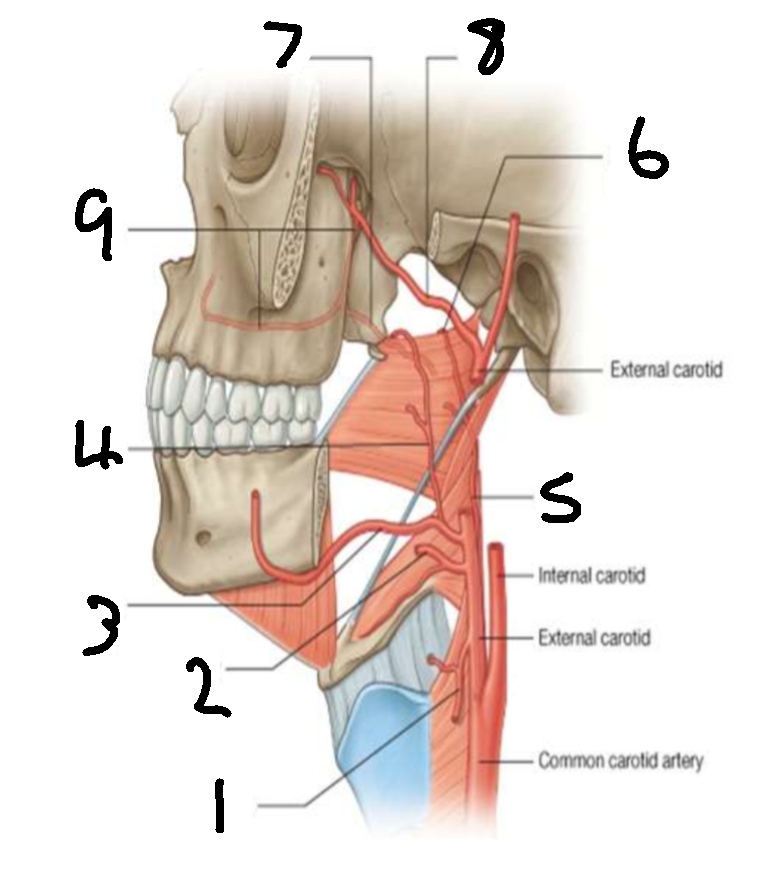
What is 2?
lingual artery
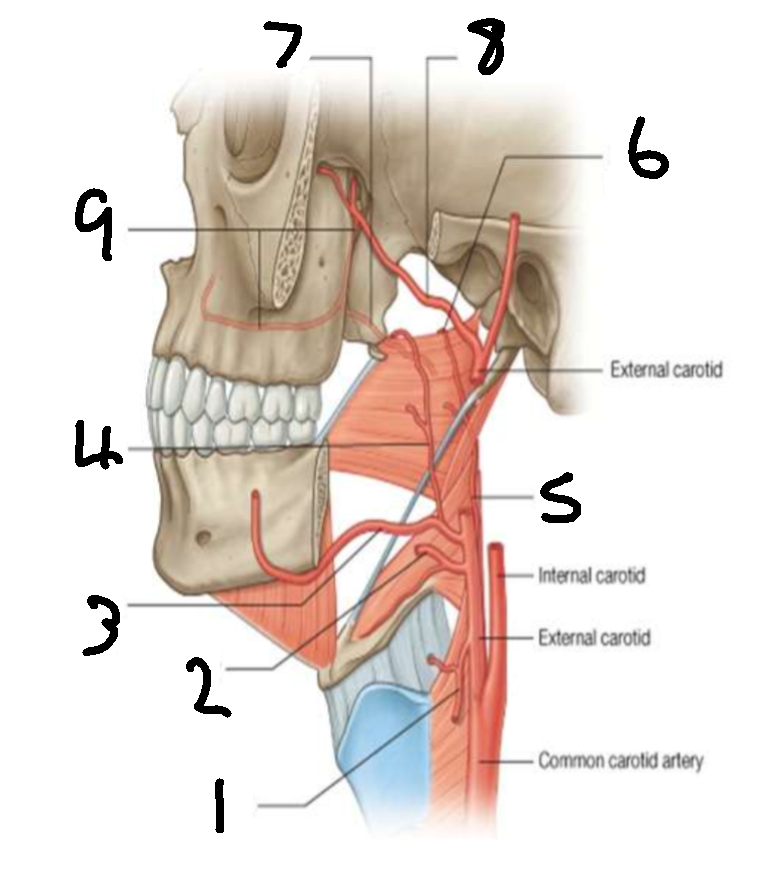
What is 3?
facial artery
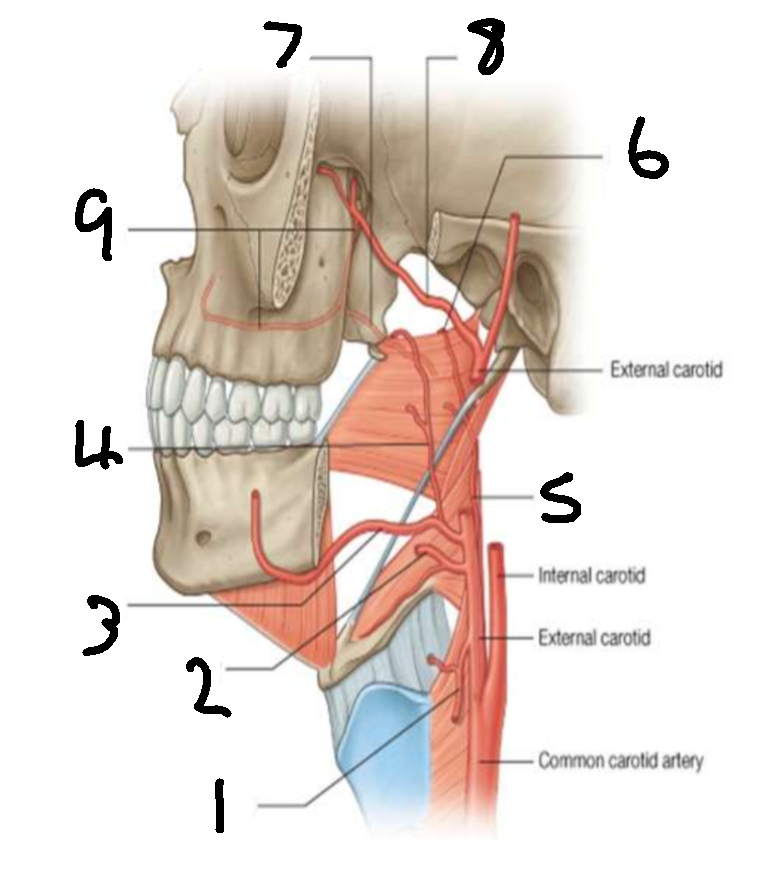
What is 4?
ascending palatine artery
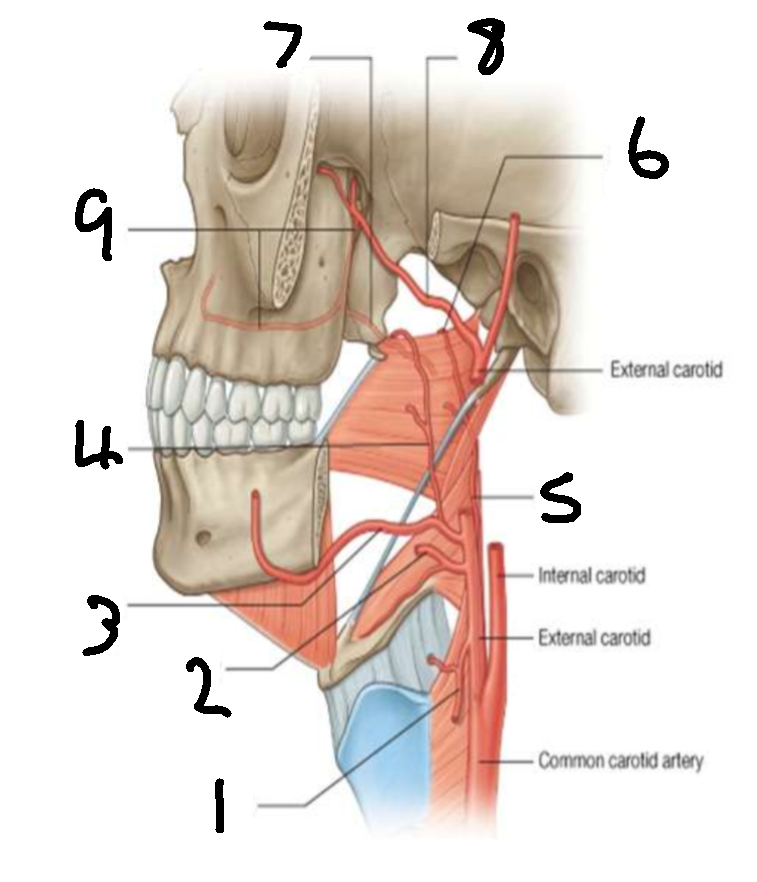
What is 5?
ascending pharyngeal artery

What is 6?
palatine branch of pharyngeal artery

What is 7?
lesser palatine artery
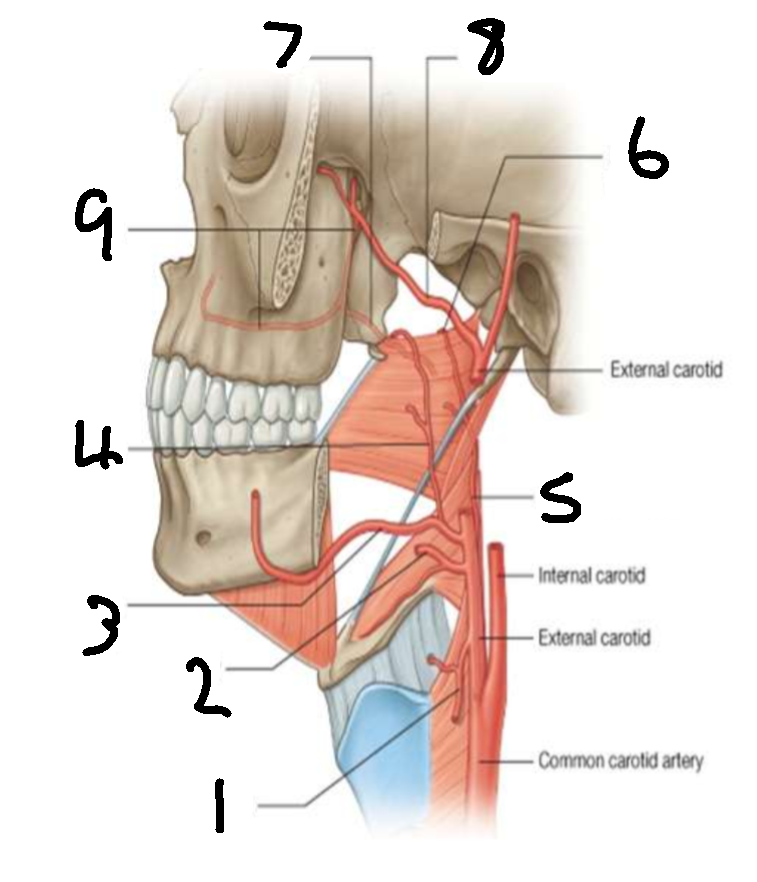
What is 8?
maxillary artery
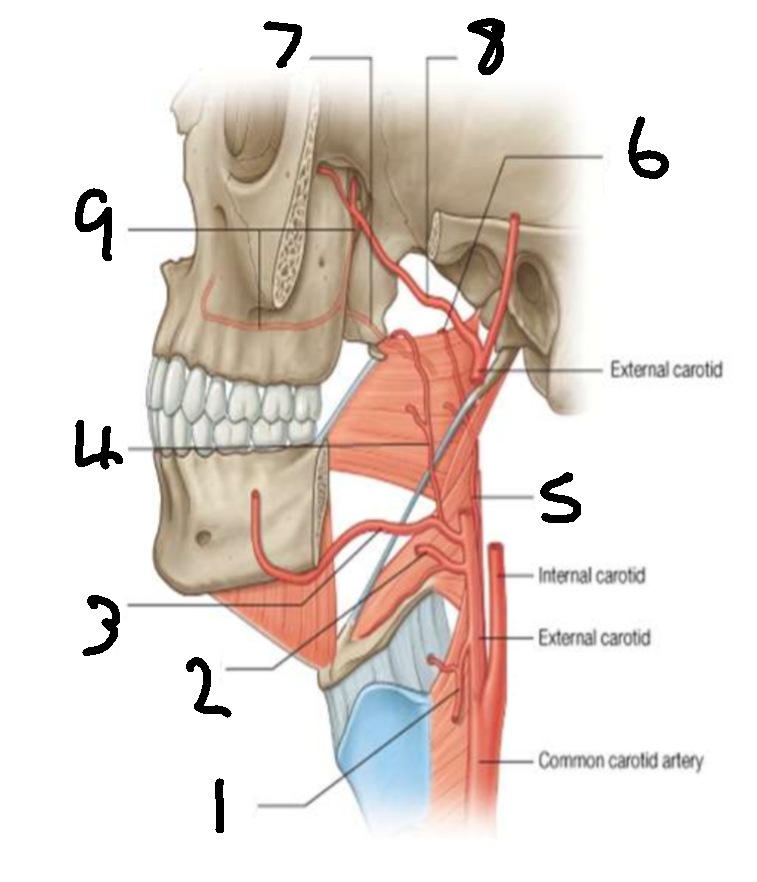
What is 9?
greater palatine artery
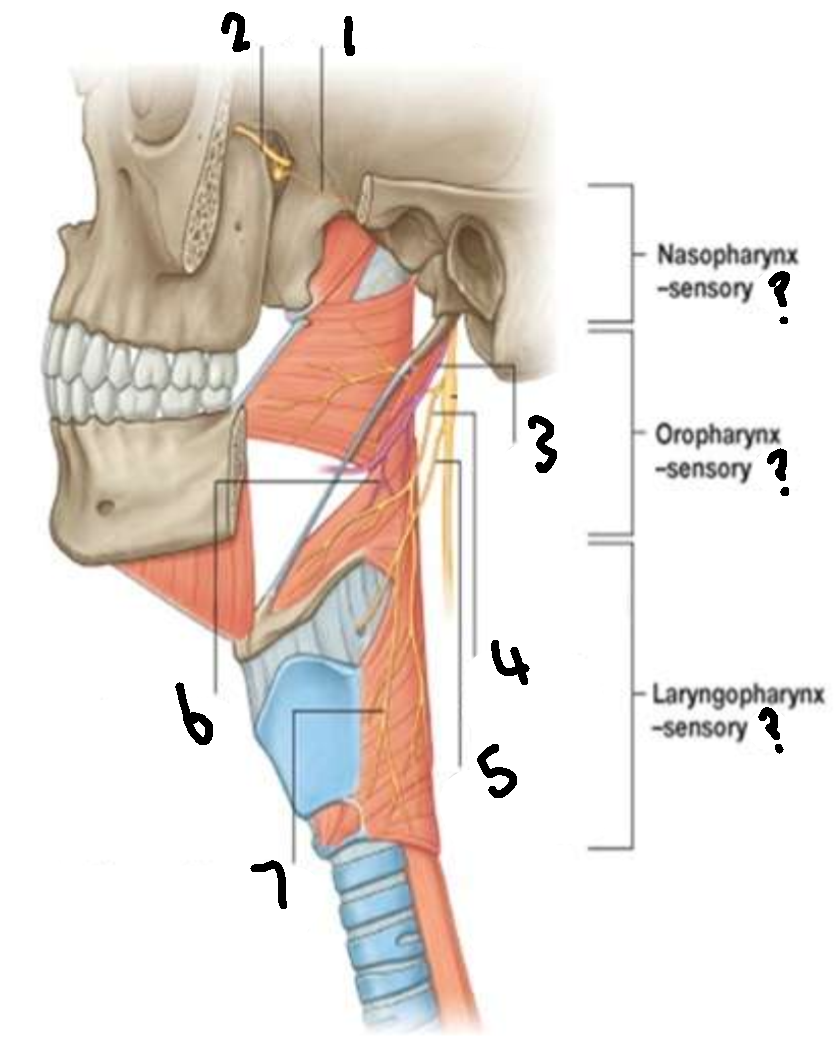
What provides sensory innervation to the nasopharynx?
mandibular branch of trigeminal V2
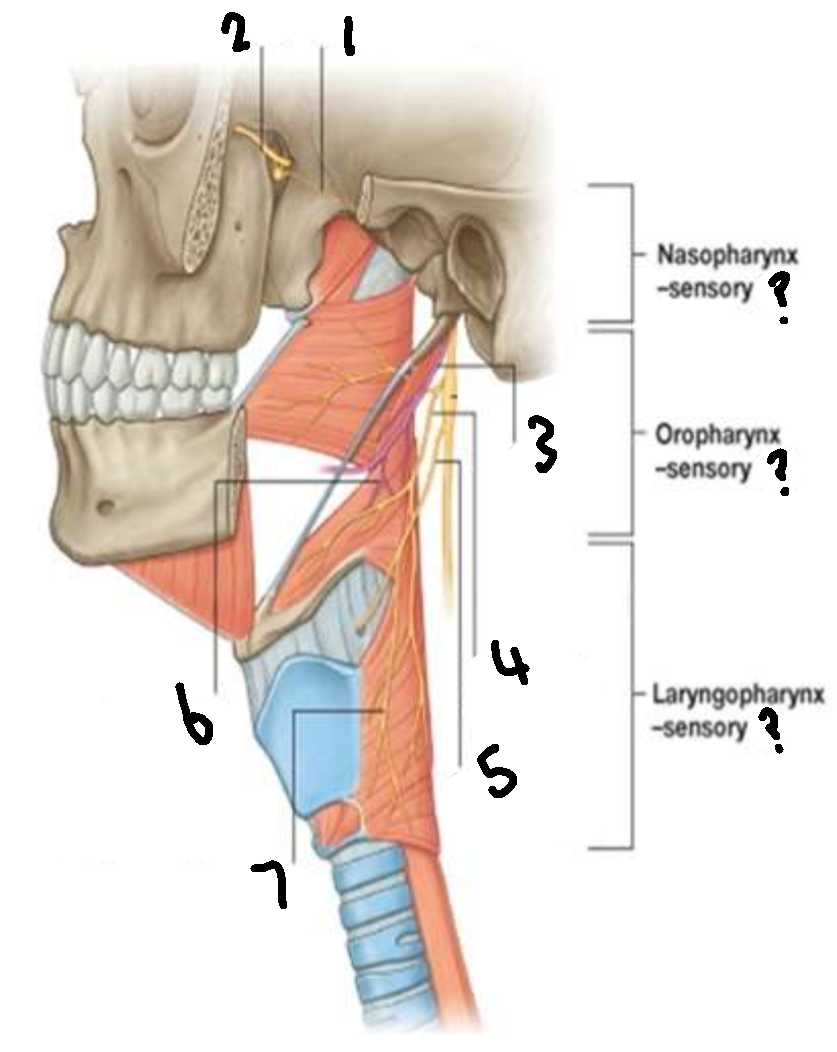
What provides sensory innervation to the oropharynx?
glossopharyngeal IX
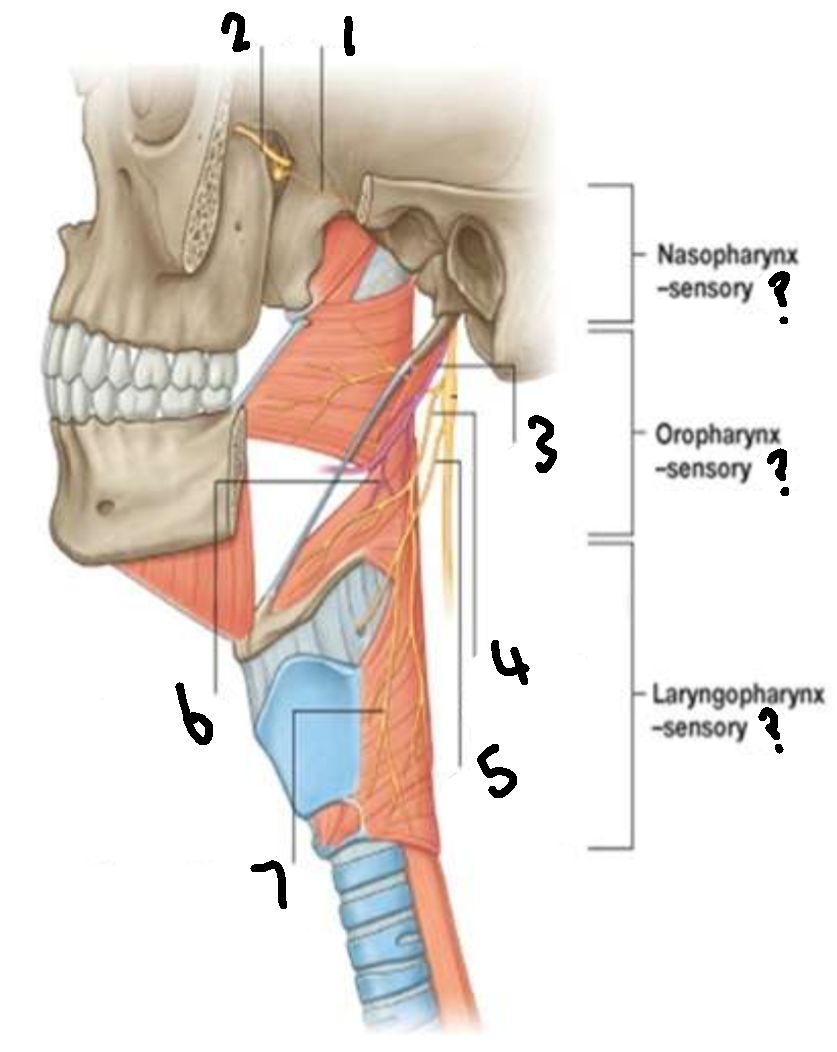
What provides sensory innervation to the laryngopharynx?
vagus X
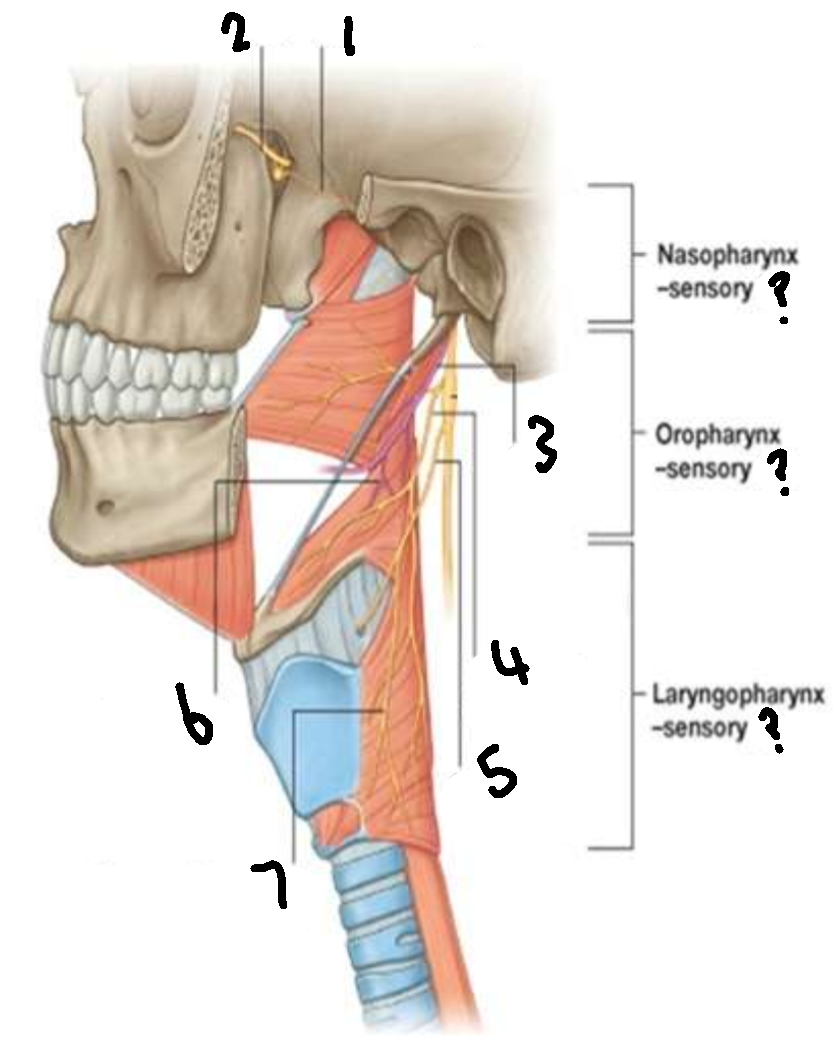
What is 1?
pharyngeal branch of V2
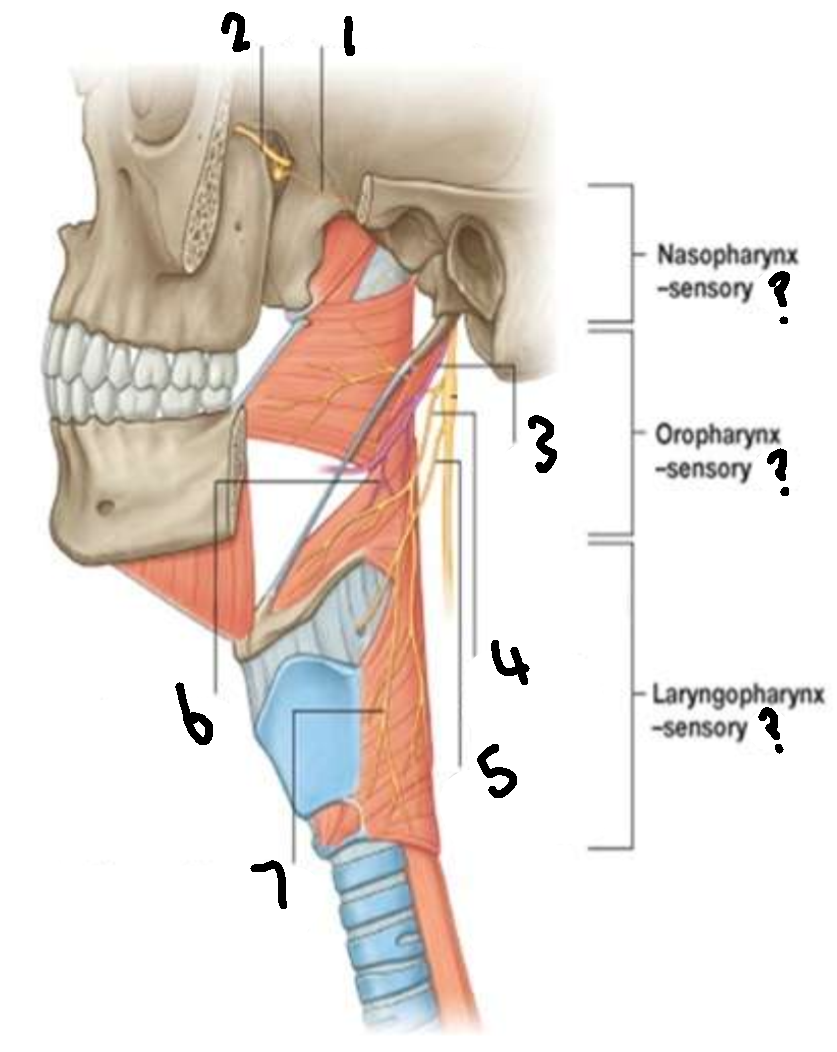
What is 2?
maxillary branch of trigeminal V2
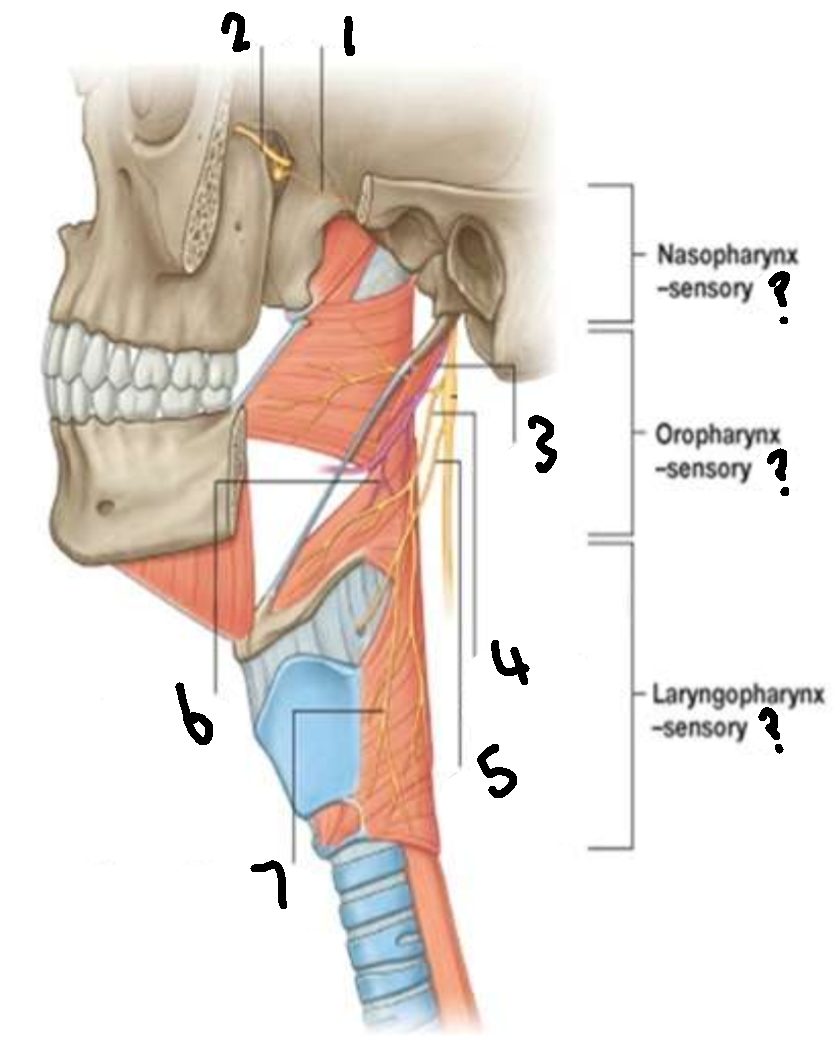
What is 3?
glossopharyngeal IX
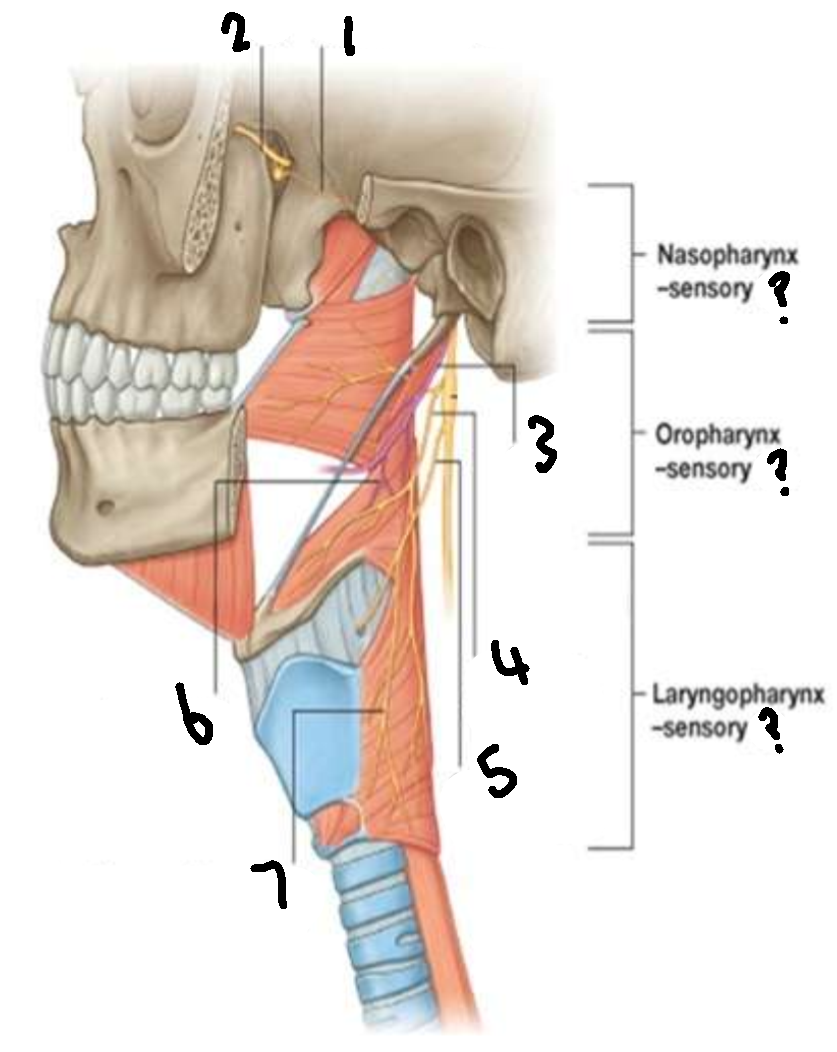
What is 4?
pharyngeal branch of vagus X
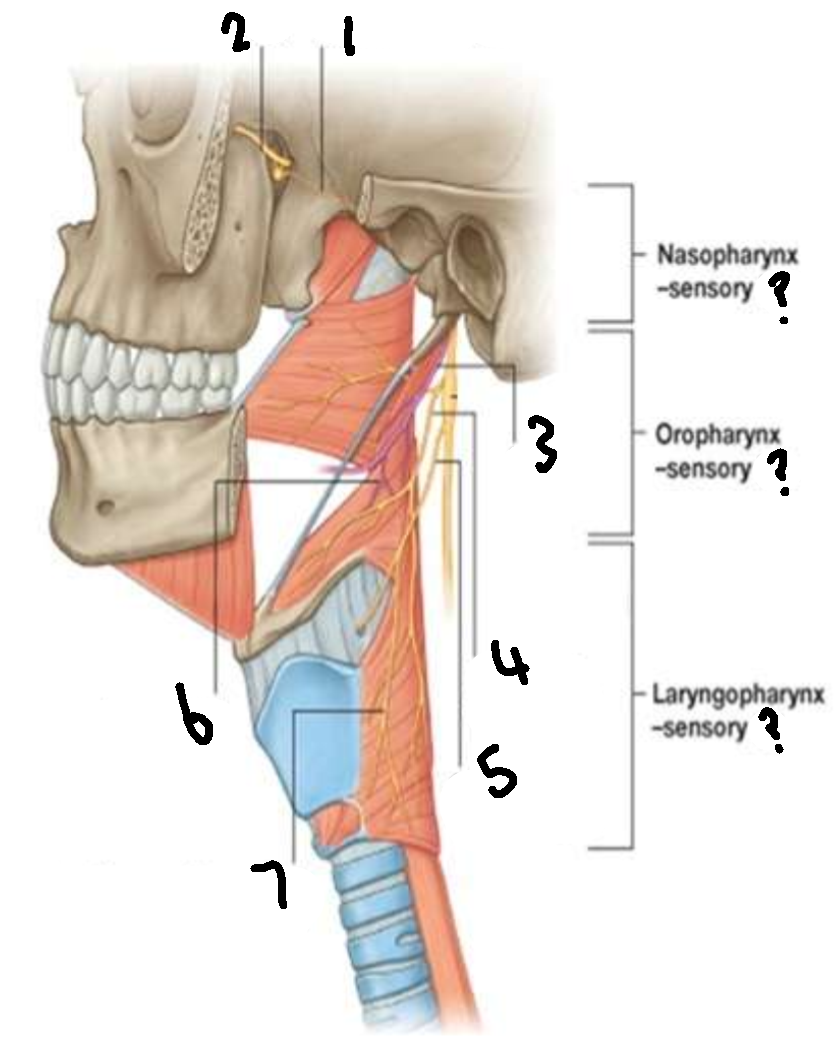
What is 5?
superior laryngeal nerve
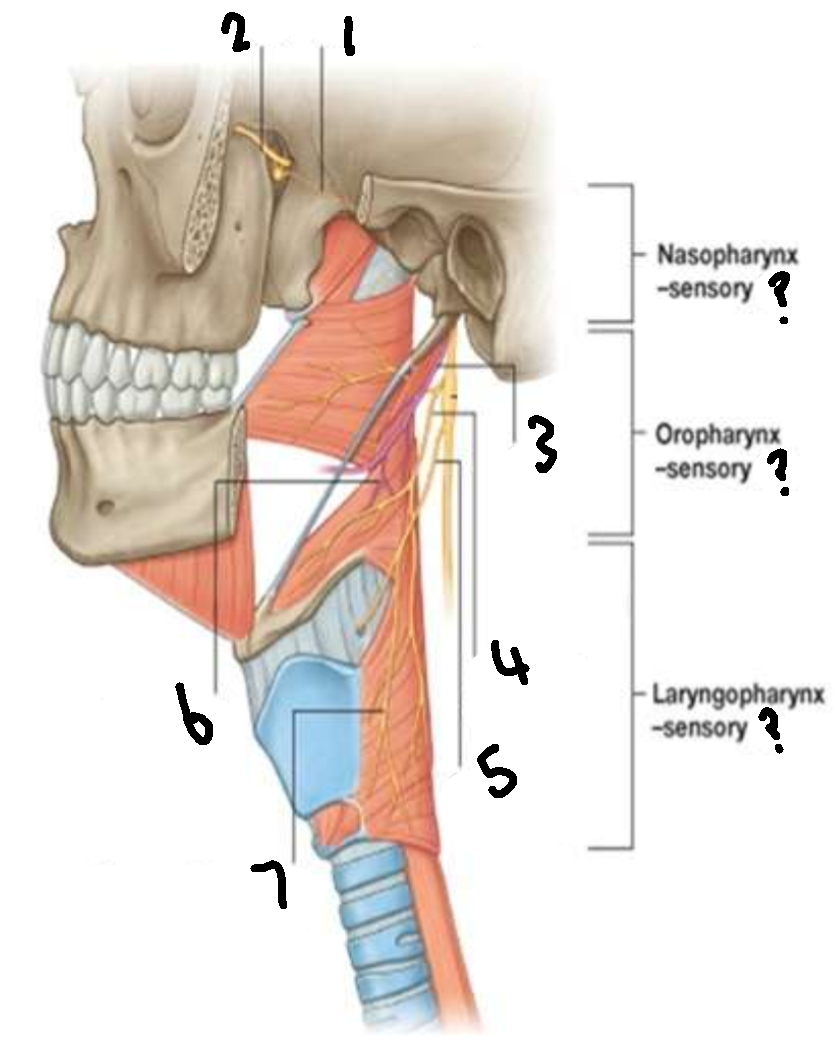
What is 6?
pharyngeal branch of IX

What is 7?
external laryngeal branch of superior laryngeal nerve of X